




Beloveds,
“
This is a truth I have carried with me throughout my life, and it is one I see so clearly reflected in the sacred walls of St. Paul’s Episcopal Cathedral. When I was called to lead this remarkable community, I knew I was being drawn to a place that had faced profound heartbreak and emerged with incredible resilience.
This cathedral knows the heartbreak of life, but also the strength of resiliency. Thirty years after the Oklahoma City bombing, we reflect on that tragic moment a moment that happened just a block and a half from where we stand today but this tragedy does not define us. Yes, it is part of our story, but it is not our story. We have not been held captive to the trauma of that moment. Instead, this community has worked diligently to remember, to heal, and to move forward, guided by love and the belief that we can hold both hardship and beauty in the same space.
I felt drawn to the reality of this place, and I wanted to bring my family here, to a community that understands what it means to face difficult moments yet refuses to be overwhelmed by them. It is this balance—this holding of tension between hardship and beauty—that I believe is at the core of our strength as a cathedral.
One of the most powerful symbols of our remembrance is the East Garden, where the broken cross that once stood atop the cathedral now rests. When you enter that space, you are invited to hold both life and death, and yet, somehow, you find peace and renewal. The Celebration Arbor is designed as a place of respite and restoration, a tangible reminder that while we face the pain of loss, hope always emerges.
Each year, as we read the names of those lost in the bombing, we honor their lives, recognizing not only the weight of their loss but also the potential of what their lives could have been. It is a heavy moment, but it is one filled with love. Their lives may have been taken with anger, but their memory is held in love. This is the message that we carry with us: Love always gets the last word.
As you read this special edition of the Spiritus Gladius magazine commemorating the 30th anniversary, with the incredible stories of survival of our members, may you be reminded that we are not defined by what has happened to us, but by how we rise, remember, and continue to live in love.
As we continue to walk together in faith, let us hold onto this truth. Even in the face of tragedy, even when we are surrounded by heartbreak, love will always have the final say.

The Very Reverend Katie Churchwell 15th Dean, St. Paul’s Episcopal Cathedral

TThebombingoftheAlfredP.MurrahFederalBuildinginOklahomaCityon hebombingoftheAlfredP.MurrahFederalBuildinginOklahomaCityon April19,1995,remainsthedeadliestactofhomegrownterrorisminU.S.history. April19,1995,remainsthedeadliestactofhomegrownterrorisminU.S.history.
IItsimpactreverberatedfarbeyondtheblast,touchingtheheartsandlivesofcountless tsimpactreverberatedfarbeyondtheblast,touchingtheheartsandlivesofcountless iindividuals,includingthoseatSt.Paul’sEpiscopalCathedral,whichsatamere1,500feet ndividuals,includingthoseatSt.Paul’sEpiscopalCathedral,whichsatamere1,500feet ffromtheexplosion.Evendecadeslater,theeffectsontheCathedral’speopleand romtheexplosionEvendecadeslater,theeffectsontheCathedral’speopleand sstructurearestilldeeplyfelt. tructurearestilldeeplyfelt.
TTheCathedral’scloseproximitytotheblastcausedimmensestructuraldamage.Theforce heCathedral’scloseproximitytotheblastcausedimmensestructuraldamage.Theforce oftheexplosioncausedtheroofandotherportionsofthebuildingtoliftandthencrash oftheexplosioncausedtheroofandotherportionsofthebuildingtoliftandthencrash backdown,whiletheentirestructureexpandedoutward.Thisviolentforcetiltedmanyof backdown,whiletheentirestructureexpandedoutward.Thisviolentforcetiltedmanyof ttheCathedral’swindowsoutward,shatteringglassandleavingtheroofandfaçade heCathedral’swindowsoutward,shatteringglassandleavingtheroofandfaçade deeplyscarred.Atnearlyacenturyold,repairingahistoricalbuildingcamewithmany deeplyscarred.Atnearlyacenturyold,repairingahistoricalbuildingcamewithmany challenges,butthedeterminationtorebuildwasgreater. challenges,butthedeterminationtorebuildwasgreater.
AmongthemosticonicremnantsofthatdayistheCathedral’sbrokencrossitsjagged, AmongthemosticonicremnantsofthatdayistheCathedral’sbrokencrossitsjagged, ffracturedformasymbolofbothdestructionandhope.Initiallyamarkofthephysical racturedformasymbolofbothdestructionandhope.Initiallyamarkofthephysical damagefromthebombing,ithassincetransformedintoapowerfulreminderof damagefromthebombing,ithassincetransformedintoapowerfulreminderof rresilience,grace,andfaith.Nowmemorialized,thebrokencrossstandsasasacred esilience,grace,andfaith.Nowmemorialized,thebrokencrossstandsasasacred ssignpostabovetheMemorialGatesonthejourneyfromdevastationtorenewal. ignpostabovetheMemorialGatesonthejourneyfromdevastationtorenewal.
FewmayknowthatStPaul’scollaboratedcloselywithWashingtonNationalCathedralto FewmayknowthatSt.Paul’scollaboratedcloselywithWashingtonNationalCathedralto createandinstallanewcrosstoreplacethebrokenone.Afteraperiodoffundraising, createandinstallanewcrosstoreplacethebrokenone.Afteraperiodoffundraising, tthe“LiftHightheCross”Sundaywascelebratedwithgreatfanfare,markingasignificant he“LiftHightheCross”Sundaywascelebratedwithgreatfanfare,markingasignificant momentintheCathedral’srestoration. momentintheCathedral’srestoration.
TTherebuildingprocessspannedyears,becomingatestamenttotheenduringstrengthof herebuildingprocessspannedyears,becomingatestamenttotheenduringstrengthof ttheCathedralcommunity.Restorationincludedextensivestructuralandelectricalrepairs heCathedralcommunity.Restorationincludedextensivestructuralandelectricalrepairs ttoboththeCathedral’sinteriorandexterior,aswellastheparishhouseandeducation oboththeCathedral’sinteriorandexterior,aswellastheparishhouseandeducation building,culminatingintheinstallationofaneworgan.Theacquisitionofwhatisnowthe building,culminatingintheinstallationofaneworgan.Theacquisitionofwhatisnowthe DeanBackAdministrationBuildingfurtherexpandedtheCathedral’smission,whilethe DeanBackAdministrationBuildingfurtherexpandedtheCathedral’smission,whilethe MemorialGatesandCloister,installedintheaftermath,serveasapermanenttributeto MemorialGatesandCloister,installedintheaftermath,serveasapermanenttributeto tthoselostaplaceforreflection,remembrance,andpeace.Altogether,therenovation hoselostaplaceforreflection,remembrance,andpeace.Altogether,therenovation andrestorationtookyearsandcostmillionsofdollars,buttheystandasatestamentto andrestorationtookyearsandcostmillionsofdollars,buttheystandasatestamentto ffaith,hope,andperseverance. aith,hope,andperseverance.
Sittingsoclosetotheepicenterofdestruction,St.Paul’sbecamemorethanjustahouse Sittingsoclosetotheepicenterofdestruction,St.Paul’sbecamemorethanjustahouse ofworshipitbecameabeaconofresilienceandrenewal.Everybricklaidandevery ofworshipitbecameabeaconofresilienceandrenewal.Everybricklaidandevery beamrestoredcarriednotjusttheweightofreconstruction,buttheweightofmemory. beamrestoredcarriednotjusttheweightofreconstruction,buttheweightofmemory EachpieceoftheCathedralrebuiltstandsasatestamenttotheclergy,staff,and EachpieceoftheCathedralrebuiltstandsasatestamenttotheclergy,staff,and parishionerswhoendured,tothecommunitythatgatheredinfaith,andtothosewho parishionerswhoendured,tothecommunitythatgatheredinfaith,andtothosewho wouldcometofindsolacewithinitswallsintheyearsthatfollowed. wouldcometofindsolacewithinitswallsintheyearsthatfollowed.Thescarsofthat Thescarsofthat daymayneverfullyfade,buttheydonottellastoryofdestructiontheytellastory daymayneverfullyfade,buttheydonottellastoryofdestruction—theytellastory ofsurvival,faith,andacommunityboundtogetherbysomethingstrongerthan ofsurvival,faith,andacommunityboundtogetherbysomethingstrongerthan ttragedy.St.Paul’sdoesnotsimplystand;itrises. ragedy.St.Paul’sdoesnotsimplystand;itrises.
TTheinterviewsandstoriessharedinthisissueweregatheredandwrittenbySarah-Emily heinterviewsandstoriessharedinthisissueweregatheredandwrittenbySarah-Emily Steinhardt,CathedralCommunicationsMinister,toensurethatthelegacyofthatday Steinhardt,CathedralCommunicationsMinister,toensurethatthelegacyofthatday andtheresilience,faith,andstrengthitrevealedwillendureforgenerations.Aswe andtheresilience,faith,andstrengthitrevealedwillendureforgenerations.Aswe rreflectonthepast30years,maythesevoicesremindusthateveninthefaceof eflectonthepast30years,maythesevoicesremindusthateveninthefaceof devastation,hopepersists,faithsustains,andacommunityboundbylovewillalwaysrise devastation,hopepersists,faithsustains,andacommunityboundbylovewillalwaysrise again.Whileitisimpossibletocaptureeverystory,asoneoftenleadstoanother,thisis again.Whileitisimpossibletocaptureeverystory,asoneoftenleadstoanother,thisis jjustthebeginning.Wehopetheseconversationswillinspiregenerationstocome. ustthebeginningWehopetheseconversationswillinspiregenerationstocome

Father and son, Dean George Back (right) and the Rev. Luke Back (left), photographed in late March 2025, proudly wear their St. Paul’s Broken Crosses. The crosses are displayed on lanyards featuring the St. Paul’s Seal and the Oakerhater glyph, lovingly hand-stitched by members of Whirlwind Mission, Watonga.
Editor’sNote:DeanGeorgeBackwasjoinedby hisson,formerCathedralCanonLukeBack,for theirinterview.
Dean George Back served as the dean of St. Paul’s from 1982 to 2010 There is likely no one more thoroughly informed about the events surrounding the Oklahoma City bombing, its profound effects on the Cathedral, and the extensive restoration efforts that followed than Dean George Back.
On the morning of Wednesday, April 19, 1995, Dean George Back was recovering from a busy Easter just a few days prior He decided to take his time getting to work, making a stop at the dry cleaners. While standing in line, he saw the television on the counter showing live footage of devastation across downtown Oklahoma City. Realizing this had happened just feet away from the Cathedral, Dean Back immediately left forgetting all about the linens and rushed to St. Paul’s.
Driving through the city, he vividly recalls the constant hum of helicopters circling overhead. When he arrived at the Cathedral around 9:30 a m , people were already pouring in, seeking first aid or dropping off supplies for rescuers "People helped and did everything they could we literally gathered every single first-aid item we could and gave them to rescuers, " Dean Back remembers.
Two of the most striking memories for the Dean were the dust and the phones "To my knowledge, we had around 26 landline phones across the campus. That morning, people wandered in from the street, needing to use a phone to call loved ones and let them know they were okay. The phones were ringing off the hook with people checking on us or trying to get messages to others It was chaos But I mostly remember the dust There was so much dust from the bombing and the damage it kept clogging the phones and rendering them unusable."
One of the most powerful moments of that morning was when federal agents swarmed onto St Paul’s grounds, declaring that the threat of a second bomb was imminent. They ordered everyone to evacuate immediately. But the agents hadn’t met St. Paul’s Mobile Meals Team, who were in the kitchen of Dean Willey Hall preparing meals for their clients. “The cooks looked them in the eyes and said, ‘No! We’re not leaving until we ’ re done cooking!’” Dean Back recalls with a chuckle. Despite the strict orders, the team refused to vacate until they had finished their work.
Eventually, the agents forced everyone to move far back to 10th Street, deemed a safe site for reunification and waiting.
From 10th Street, Dean Back made his way to St. Anthony’s Hospital, where he recalls the overwhelming crush of people “There were literally people in every square foot of that hospital ” Eventually, he managed to exit through a back door and return to the Cathedral. By that time, a barricade had been erected around the building. The north parking lot had been repurposed for government and National Guard vehicles Despite the barriers, people continued to pour onto the Cathedral grounds offering help, bringing supplies, and sharing their feelings.
By 2 p.m., about 100 parishioners were on-site, ready to assist in any way they could. "A call came in that we needed to feed 200 rescue workers at 6 p m that night Dean Willey Hall’s ceiling was still falling down, windows were blown out, and the gas was off but we were ready to do this,” the Dean recalls. The kitchen quickly filled with food, and meals were prepared. “In addition to our members, people literally came off the street wanting to help,” he adds.
The Back family also played crucial roles in the aftermath of the bombing. Dean Back’s wife, Margaret, a nurse, had been in Dallas that morning for a meeting. She made her way back to Oklahoma City by late afternoon, heading straight to the Cathedral to assist It would be Margaret, sometime after the bombing, who would discover that parishioner Susan Urbach still had a large piece of glass lodged in her back.
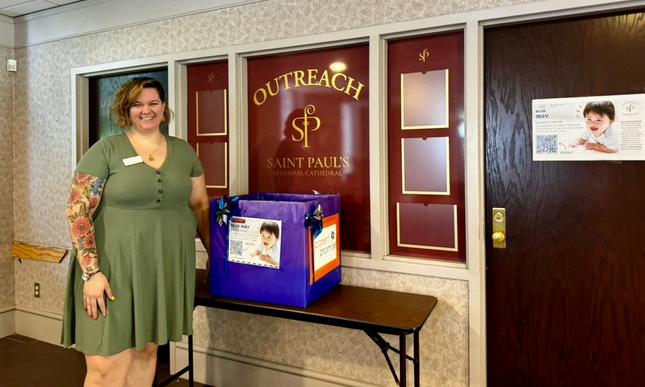
The Backs’ young adult son, Luke, a student at the University of Oklahoma at the time, drove up that afternoon, determined to reach the Cathedral Navigating through back alleys and bypassing the National Guard, he arrived and immediately began helping with the cleanup. But his involvement in the Cathedral’s restoration would extend far beyond that single day.
Luke had been pursuing International Studies at OU, with a clear path toward a career in business. Yet, as he watched his father pour his heart into restoring St. Paul’s, something within him shifted. What began as a single act of service turned into a profound calling one that would alter the course of his life.
“The bombing changed everything,” Luke recalls “In the days, months, and years that followed, I saw my dad tirelessly rebuild this sacred space, not just structurally but spiritually. That experience shaped me in ways I never expected. It made me realize where I was truly meant to be.”

Inspired by his father’s unwavering dedication to faith and service, Luke chose to follow in his footsteps, becoming an Episcopal priest. His journey would ultimately give the chance for Luke to serve alongside his father as Cathedral Canon Priest Luke began as Curate in 2002, progressing to Associate and then Canon over the next eight years. After his father’s retirement, he stepped into the role of Priest-in-Charge. In 2010, Luke departed St. Paul’s to become the rector of Heavenly Rest in Abilene, Texas.
Many people are familiar with the iconic broken cross, but few know the true story behind it Dean Back recalls, “The night after the bombing, April 20, 1995, NBC Nightly News with Tom Brokaw ended their broadcast with an aerial shot of our shattered cross with the missing arm, closing the news with that image. The cross quickly became a symbol to us, the nation, and the world that we were broken and damaged but still standing.”
Contrary to popular belief, the cross didn’t actually fall and shatter onto the ground. It was cracked, and one arm had fallen off due to the blast. The cross was carefully removed and now resides in the wall above the East Garden at the Memorial Gates, the broken arm at the Memorial Museum. Restoration and Growth
The bombing profoundly interrupted ministry at St. Paul’s. The St. George’s Guild, which served OKC residents in need of assistance, was especially impacted "The current Administration Building was literally on the drawing board at the time. We had to move construction forward on that space as it was the quickest way back to parish functioning” Dean Back recalls.
Interestingly, a previous owner of this site didn’t want to sell it to the cathedral, despite repeated offers. It was thanks to the persistence of Mother Margo Nesbitt and her husband Charles that the building was eventually acquired by St. Paul’s. The Nesbitts also helped the cathedral acquire what is now the south parking lot, located across from the Cathedral’s main entrance
Our new building became a vital resource during the many years of extensive renovations that followed the blast. It served as space for children’s classes, meetings, and storage. Reflecting on the restoration, Dean Back notes how the tragedy allowed for many much-needed improvements emerge: “The wiring in the old buildings was about 100 years obsolete no insulation, completely bare! A nail hammered into the wall could have easily started a fire.”
The recent death of Canon Carol Hampton is a reminder of another Cathedral rescue a decade earlier
When Dean Back began in 1982, building engineers told the parish vestry that the bell tower was in unstable condition and the entire Cathedral’s old slate roof needed to be replaced. It was Canon Hampton and her husband Jim who co-chaired a ‘Save the Cathedral’ drive that led this effort they also provided the lead gift
In reflecting on the Oklahoma City bombing and its lasting impact on the church, George & Luke Back both share spiritual insights that emerged from this devastating time April 19, 2005, marked the 10th anniversary of the tragedy, and Reverend Canon Luke Back, who was serving as Cathedral Canon, was invited to offer a prayer at the ceremonies honoring the occasion.
Surrounded by prominent figures such as Governor Frank Keating and national news anchors, Luke vividly recalls a powerful vision he experienced that day “I looked up from the lower level of the Memorial grounds and saw every tribe, nation, and person gathered under the Survivor Tree. The Tree of Life, used in our columbarium at the cathedral, is much the same a recreated image of the Survivor Tree There is no coincidence in this ”

For both Luke and his father, Dean George Back, the bombing reinforced profound spiritual truths about suffering and healing. “God allows suffering to happen around us, ” Luke reflects, “but He also enables us to move through it Understanding this helps us recover both individually and as a community.”
Dean Back, who guided St. Paul’s and the wider Oklahoma City community through the aftermath, believes the events mirrored the Paschal Mystery the cycle of death and resurrection seen in the crucifixion of Christ “The way through is with suffering, and I think that is faith. Faith is about taking things as they come, piece by piece,” he reflects.
One particularly poignant metaphor for Dean Back is how the cathedral was gradually rebuilt Windows were replaced, the East Garden was developed, and the cathedral reopened on April 20, 1995, restored to its former glory. “The various pieces came back into a whole. Some came later, like the new organ, and some sooner, like the development of the East Garden. It was all about restoring the integrity of who we are ”

Dean Geroge
Back served at St. Paul’s Episcopal Cathedral from 1982-2010
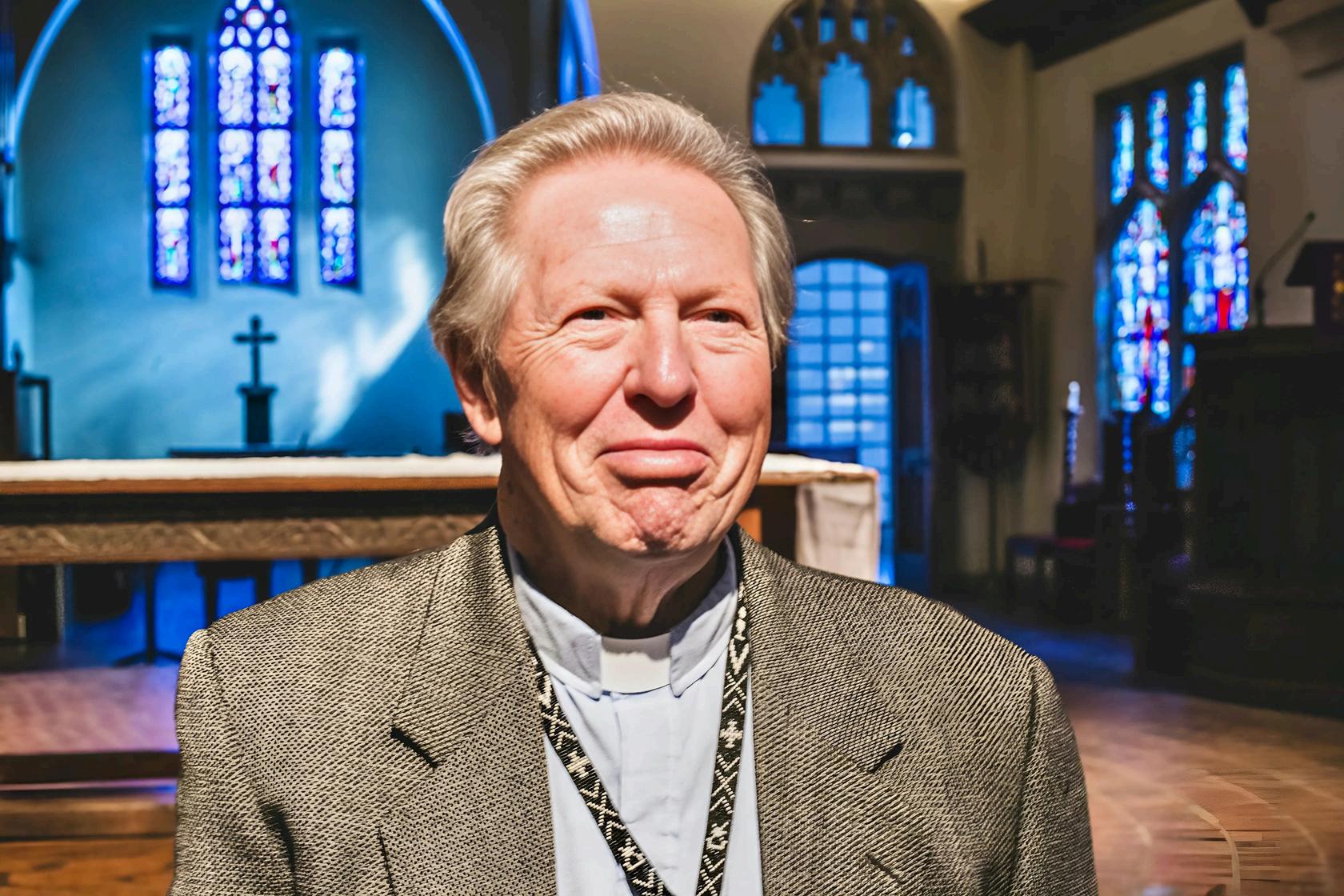
Reflecting on the lessons to younger generations, Dean Back encourages resilience. “We all have our own challenges, and stories from the past can help with their pain and suffering, becoming part of a larger whole. This story from the past can do the same The current generation must face their own challenges, but they’ve seen what we ’ ve endured it’s available to them!”

The columbarium in the East Garden is particularly significant for both George and Luke, as it symbolizes not only the aftermath of April 19 but also the healing and restoration that followed. Designed by Brooks Tower after the bombing, the columbarium reflects themes of death, resurrection, and life. Tower was intentional in his design, aligning the columbarium with feast days such as the June 26 Feast of John the Baptist and the December 25 Birth of Christ
“The columbarium is designed to reflect human life and the flow of time,” shares Luke. “Most people may not realize that on the Summer Solstice (June 26), the sun touches the Tree of Life directly, and from the Winter Solstice (December 25), the light increases. It’s a powerful reminder of the cycles of death and rebirth that we experience in life and faith.”
The Oklahoma City bombing left an indelible mark on the lives of those at St. Paul’s, and Dean George Back, along with his son Luke, played a crucial role in the cathedral's restoration Their efforts not only restored the physical structure but also reinforced the community's spirit, proving that even in times of immense tragedy, hope and resilience can prevail



Mother Susan Joplin’s story is one of unwavering faith, profound lessons, and the power of community in the face of unspeakable tragedy.
In 1995, when the bombing of the Alfred P. Murrah Federal Building shook Oklahoma City, Mother Susan wasn’t physically present at the cathedral that morning, but the devastation reverberated across state lines. Engaged to Larry Joplin and tending to a family medical emergency in Texas, she first heard the news on television, watching in horror as the events unfolded. “I felt desperate to get back to St Paul’s,” she recalls, the weight of uncertainty about St Paul’s Cathedral pressing on her heart.
“I kept calling and calling the cathedral, frantic to learn what was happening, but the phone lines were either busy or down.” It wasn’t until 5 p.m. that Kathy May answered the cathedral’s phone “I’ll never forget her comforting voice and in that moment she comforted me, ” Susan says, the emotion still evident in her voice.
“Then, the Dean got on the phone and as I heard his voice, I realized for the first time the gravity of the day That was the moment it dawned on me that from then on, our lives would be forever changed. At that point, my legs couldn't get me there fast enough. I needed to be with the community.” The fear and magnitude of that day remain etched in her memory. “At that point, my legs couldn’t get me there fast enough I needed to be with the community ”
Susan recalls how the North Garden of St. Paul’s became a sanctuary for first responders. As the rescue mission evolved into recovery, the Garden transformed into a refuge a place for workers to pause, pray, and process the trauma of the day “It was such a beautiful spring, with flowers and trees in full bloom amidst the devastation,” she reflects. “They came seeking solace, solitude, and the comfort of prayer. ”
In the aftermath of the bombing, the question that loomed large for everyone was: How do we move forward?
For the St. Paul’s Cathedral community, finding joy and a reason to celebrate seemed almost impossible. But joy came in unexpected ways. In 1996, Susan and Larry’s wedding became a symbol of resilience, hope, and celebration. It was a communal event, involving the entire cathedral. "No one else had been married in Dean Willey Hall," she says. The setting was far from traditional.
Cords hung down from the ceiling; the stage was an old platform from the early 1900s with faded red curtains. Yet, it became a place of beauty and joy. “There were about 75 people in the Procession, almost all of them family, friends, and parishioners. I remember people looking down from the loft area, pouring out from every corner It felt like the entire community was there, celebrating with us ”
Linda Duncan, a member of the community, donated yards of white brocade fabric, transforming the hall into a sacred space for the occasion. The wedding, though unconventional, was a reminder that even amidst brokenness, life continues, and joy can still find a way in.
One of the most profound moments for Susan came on the first Sunday following the bombing. Scott Raab, the Cathedral Musician, had found a small organ, and the multipurpose space was quickly converted for worship Half the room was filled with pews; the other half with tables for dinners and activities. “I’ll never forget the emotion of that first Sunday,” Susan recalls. “When the clergy entered for the procession, all the faces turned, and it was a sight to behold. There were stunned tears everywhere. The depth of that moment, the power of that moment is seared on my heart.”

It wasn’t just the relief of seeing familiar faces. It was the realization that they had survived, that they were still there for one another. Though no members of the cathedral had died in the bombing, everyone knew someone affected The weight of loss was palpable, but so was the power of community. They had each other. They would rebuild.
One day, a year later at a church conference in California, something dawned on Susan. “When we came together, we had joy, but joy was elusive in that time We hadn’t had joy consistently We were stuck in a space of ‘What do we do?’ and had to figure it out together.” It wasn’t until the new organ arrived as one final piece of the restoration that Susan felt a big weight of tragedy lift. The organ ’ s music filled the cathedral, and for Susan, it symbolized the return of joy a joy that finally allowed the community to move past the darkest days. “I realized it is when we ’ re in the broken places that God can come in.”
But for Susan, one of the deepest lessons came from a conversation amidst the rubble. On the day of the bombing, she walked into the devastated nave and found Nick Irza, a parishioner, trying to help amidst the debris. He looked at her in the face and said, "This is only bricks and mortar. Keep your vision on us. We’re here. We’ll build on that."

That simple, profound statement became a guiding light for Susan. It wasn’t the building that made St. Paul’s it was the people, the faces, the community that held everything together. Susan reflects that although it was a challenge to find space for everything, the physical closeness and togetherness were nice
Reflecting on that time, Susan says, “Being in the community helped me put one foot ahead of the other in a time of incredible stress. People often had different ideas, but the healing factor was always community Everyone was in it together It just made you so grateful for everyone who was there.”
The brokenness of the building became a metaphor for the brokenness many felt during the time of rebuilding. Dean George Back sought out a stained-glass artist to aid in the restoration and, through that journey, met artist Steve Wilson from Baton Rouge, Louisiana. Steve would ultimately go on to create the 'Creation Windows' of St. Nicholas Chapel at St. Paul's, which were once a single cohesive piece.
“Steve was so deeply moved by our story,” recalls Mother Susan. “Broken pieces of a former artwork lay scattered across the floor of his studio. Inspired by our broken cross, he took all those fragments and created something whole.” The journey from brokenness to wholeness is echoed through the project and reflects the story of that time “Where you are broken, creativity lives in the depths,” shares Mother Susan.
Many people do not know that the Creation Windows, now forming six distinct panels, were originally one united piece. The decision to take it apart and form the six panels now installed serves as a powerful symbol of transformation and renewal.
“The St. Nicholas Chapel has always served as a children's chapel, but the renovation also gave us the chance to reorient The altar, which once faced north, was reoriented to face east And the pews, which had always been quite small, were replaced to suit a more welcoming space. ”
Mother Susan also fondly recalls two particularly dedicated volunteers during this period. Rachel Pringle and Jim Pontius would set up a small desk in the Education Building every day from 9 a m to noon, writing thank-you notes as cards, posters, gifts made by children, and more poured in from all over the world. “They wanted to touch us, and we had to let the senders know what that meant to us, ” Susan reminisces.
The bombing, horrific as it was, brought the community together in ways that are nearly impossible to describe. “Many of us may have been on different paths before April 19, 1995, but after that day, there was no leaving. Dean George Back’s leadership helped gel us together and guide our healing ”
Mother Susan's own ministry at St. Paul’s spanned 31 years, and she retired in 2022. She witnessed the cathedral’s worst day and its triumphant rebuilding. She was present as the community found its “ new normal” and as generations of families continued to worship and serve together Her journey is a testament to the power of faith, the strength of community, and the grace that sustains us in our darkest moments.
Reflecting on her years at St. Paul’s, Susan feels deep gratitude for the faces that have shaped her journey, the lessons learned from tragedy, and the profound love that held the community together. “We were broken apart, but it opened a well of gratitude within us. ” The bombing may have been a defining moment in Oklahoma City’s history, but it was the grace and resilience of the people that defined St. Paul’s Cathedral Through it all, they built on the only foundation that truly mattered each other.

What would Mother Susan share with younger generations or others about this experience? “Things happen in this world that are harder than you can ever imagine And it's most important to know how people respond George Back and Bishop Moody ran toward the destruction they didn’t run away. ” The lessons of responding in love and acting in community still resonate 30 years later. “You can learn a lot by seeing how people respond with love. Dean Back was a role model in his response, and it’s that love that shows how a community came together ”
As the cathedral moved toward healing, Mother Susan emphasized that the focus was always on wholeness. “The most important thing in life is to suit up and show up. Face it, look at it, and go from there ”

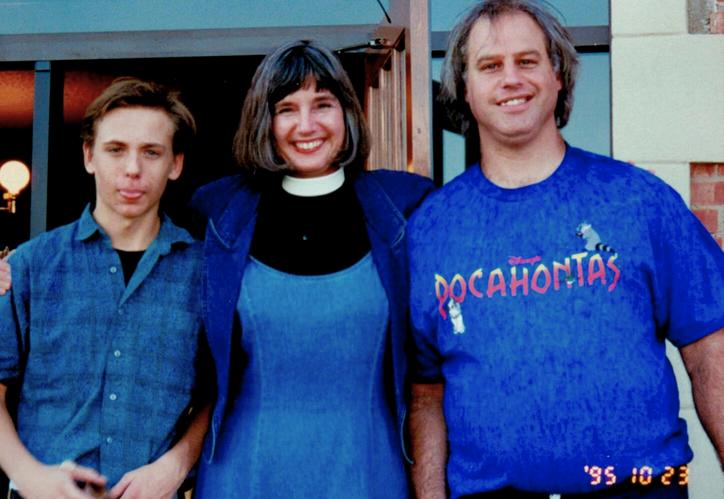




Mother Susan cradles a cherished photo of the first Holy Eucharist back in the Cathedral on April 20, 1997, meets with parishioner volunteers to coordinate recovery efforts, and plays with the harp choir (L) during services in Dean Willey Hall.
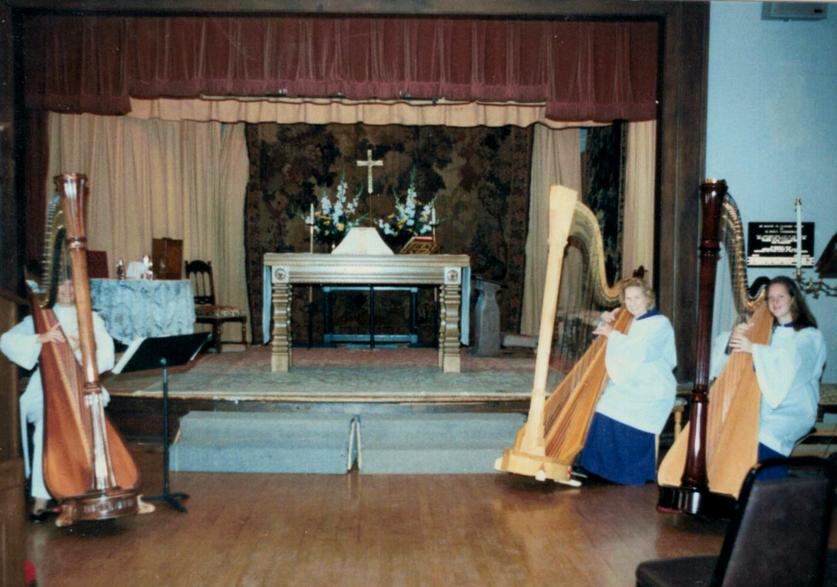


The scardoesn’t takeawaywhat happened,butitisa wayofshowingthat you ’vesurvived,that you ’vemadeit
Susan Urbach, beloved verger, parishioner, and assistant treasurer of St. Paul’s Episcopal Cathedral, will tell you that the story of April 19, 1995, is not about a single moment. "When people want to hear the story of the bombing, they want to know about THAT minute," she explains. "But that minute was only the beginning of the story "
That morning, Susan was in her office, directly across the street from the Alfred P. Murrah Federal Building. She had just stepped away from her desk, which faced the windows, to chat with coworkers. That fateful decision, the mere act of stepping away, saved her life A blast shattered the windows, sending razor-sharp shards into the room. Her blouse was shredded, and her body was sliced by the glass. The impact of the explosion knocked a light fixture and several pounds of plaster onto her head, causing serious injuries that would result in over four feet of stitches and multiple surgeries Had she been sitting at her desk at that moment, the story would have ended there.
But as Susan reflects, surviving the blast was just the start of her journey. The bombing left her with physical scars, yes, but the path to healing and finding meaning in the aftermath became her guiding force.
One of the most profound parts of Susan’s recovery was her recognition of the power of ritual and sacred spaces. She remembers how, in the aftermath of the bombing, during the next year ’ s Lenten Stations of the Cross at St Paul’s, that service incorporated with a journey to broken places around the Cathedral Property. On the first Palm Sunday after the bombing several of the downtown churches met together to process down Robinson Ave from St. Luke’s to the Memorial and then returning to their own churches for worship On the first anniversary of the bombing, there was a procession organized by the Memorial for all Family Members and Survivors of processing down the streets from the Memorial to a service at the Myriad, through a street lined with rescue workers and the public paying their respects That act of moving through the city together, was a reminder of the strength of their community and the spiritual journey they were all on. “It was a physical journey, but it was a spiritual journey that reminded us we were still being supported by the community. The message was: we haven’t forgotten. We’re healing together ” When the Cathedral was rebuilt and opened again two years after the bombing, there was a service the of Reconsecration of a Church, reconsecrating their formerly desecrated sacred space. “We had this liturgy, this ritual that made sacred what had been broken,” she recalls.
In Susan’s eyes, healing isn’t found in dramatic acts or quick fixes. Instead, it’s in the small, persistent moments of life that chip away at the pain. "Healing comes the opposite way of destruction," she reflects. "If you really look at it, what’s more powerful: a piece of concrete or a weed? Over time, that little piece of grass will crack the concrete It’s not the storm or the lightning It’s the gentle rain It’s not the dramatic moments, but the small things that matter."
Susan’s wisdom is built on these seemingly simple but profound truths. Weeks after surviving the bombing, she was speaking with a BMX magazine editor about a young Oklahoma BMX rider, Matt Hoffman, who had won a business award she had helped facilitate. During their conversation, Matt mentioned Susan’s injuries. The editor excitedly asked, “You’re gonna have a lot of scars, aren’t you?” he said, clearly impressed. Susan had never thought of her scars in that way before, but his excitement made her reconsider "I realized then that scars are a sign of healing. You don’t get a scar until you ’ ve healed."
It was this insight that the scar marks both the wound and the healing that became a guiding principle for her. "The scar doesn’t take away what happened, but it is a way of showing that you ’ ve survived, that you ’ ve made it through."

Each year, Susan returns to the rituals and memories that bring her peace. She treasures moments like the first Palm Sunday procession in 1996, when survivors and community members walked together, remembering and healing as one “It’s those moments,” she says, “those small acts, the gentle rain not the storm that truly heal us. ”
Palm Sunday Processional, 1996 (The Oklahoman)
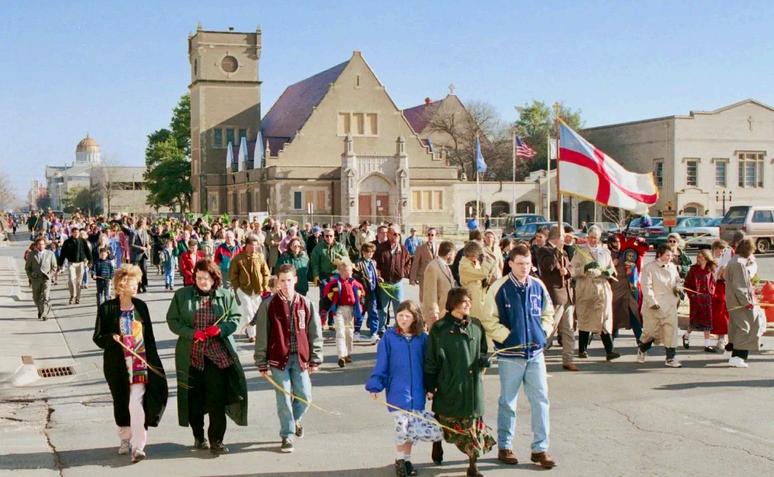



Ialwaysknew somegood wasgoingto comeofthis... together,we helpedhealeachother.
1500 feet from the steps of St. Paul’s Episcopal Cathedral on the morning of April 19, 1995, a young Dianne Dooley would find that the tragic events of that day would ultimately lead her through the doors of St. Paul’s some twenty months later.
Dianne, a valued employee at the VA office, was on her way to a meeting at the credit union and running behind that fateful morning She hated being late, and a call had already sent her back to her office once. Now, she was finally on her way. In the stairwell at exactly 9:02 a.m., with her hands on the push bar of the exit door, the explosion went off, setting a million events into motion.
“I felt it I heard it I knew at that very second it was a bomb. And, because of the timing, I somehow thought I had been the one to set it off by pushing the bar right at the exact moment it went off.”
In the moments that followed, Dianne heard a voice calling for help She stood up, thinking she’d return to her office, but smoke appeared and began burning her lungs. Knowing she had to get out quickly, she looked back to try to locate the voice, but the smoke was so thick she couldn’t see.
Stepping outside, Dianne took stock of her injuries Her wrist was split open from the blast as the door pushed outwards. Her pantyhose were ripped, and she realized she was missing one shoe the other had been blown off, which she’d only discover later. That shoe now resides at the Oklahoma City National Memorial Museum.
“My first thought as I walked out was, ‘I look a mess!’” Dianne joked lightly. As she made her way to the plaza level, she saw people rushing up the street to help. A stranger approached and urged her to lie down. Interestingly, the 'Good Samaritan' trying to assist her was clearly in shock themselves, absolutely hysterical, despite Dianne being relatively calm likely also due to shock. “The person kept telling me to ‘calm down,’ even though I was calm at the time,” Dianne recalled with a bit of nostalgia and humor.
Dianne was one of the first three victims to arrive at St Anthony’s Hospital, around 9:20 a m , after being placed in the front seat of a police cruiser and transported just a few blocks to the emergency room. Reflecting on that moment, she expressed gratitude that her family knew so quickly that she was okay, unlike many families who had to wait days, weeks, or even months to learn the fate of their loved ones
In October 1996, Dianne remembers hearing news about the new cross being hoisted onto St. Paul’s Episcopal Cathedral and feeling touched by the story, but St Paul’s wasn’t on her radar at that time It wasn’t until someone at work shared an opportunity for a grief workshop retreat at St. Crispin’s in December 1996 that her life and the life of the cathedral would intersect. Spouses were invited to the retreat, so Dianne and her husband Jim attended together. They were greatly moved by the experience and met some St Paul’s parishioners who were also participating.
“I remember the St. Paul’s people being so warm and welcoming,” Dianne said. “They talked about what a great church St. Paul’s was and how, as a family of faith, they were walking through healing together after the bombing ”
After the retreat, Dianne received a personal note in the mail from Linda, inviting her to check out St. Paul’s. A class was starting soon for those curious about faith, and the invitation came with no pressure.
Dianne took Linda up on the offer, and her life has never been the same. "I was a 'lapsed Catholic' and really thought I needed more of the spiritual component in my life,” she quipped.

In January, Dianne walked into Dean Willey Hall, where services were being held, and met Mother Susan Joplin and Dean Back. She quickly realized the church was healing itself, and she instantly knew, “This is where I belong. I walked the healing journey with them… I grabbed on, and we healed together. I saw this church reboot itself. Even though St. Paul’s was broken, they cared for others They were a place of rest ”
On Saturday, April 19, 1997 two years after the bombing Dianne was rededicated to her faith as part of the Easter Vigil.
Her husband Jim, though very supportive, didn’t immediately join her at St. Paul’s. Dianne reflects on the unique grief a spouse experiences when their partner goes through a traumatic event. “Jim was understandably mad at God for what had happened,” she shared. “He had stopped attending church, but when I would come home from St Paul’s, he always asked me about the service and the classes. He attended occasionally.”
It wasn’t long before Jim became a regular at St. Paul’s, and he was confirmed on his 40th birthday in 2000. Jim later served on St. Paul’s A/V Guild for 20 years before 'retiring '

Dianne’streasuredscrapbookof memoriesfromthebombingand hertimeofhealing.


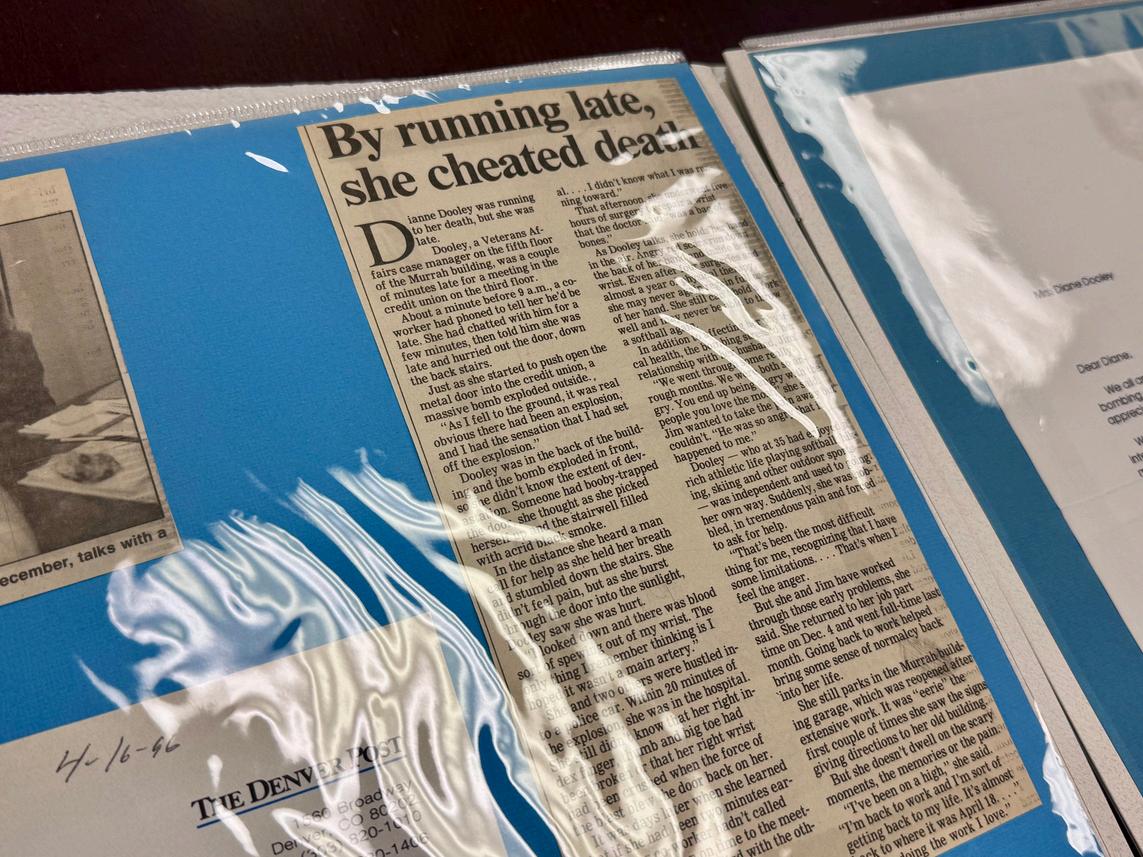
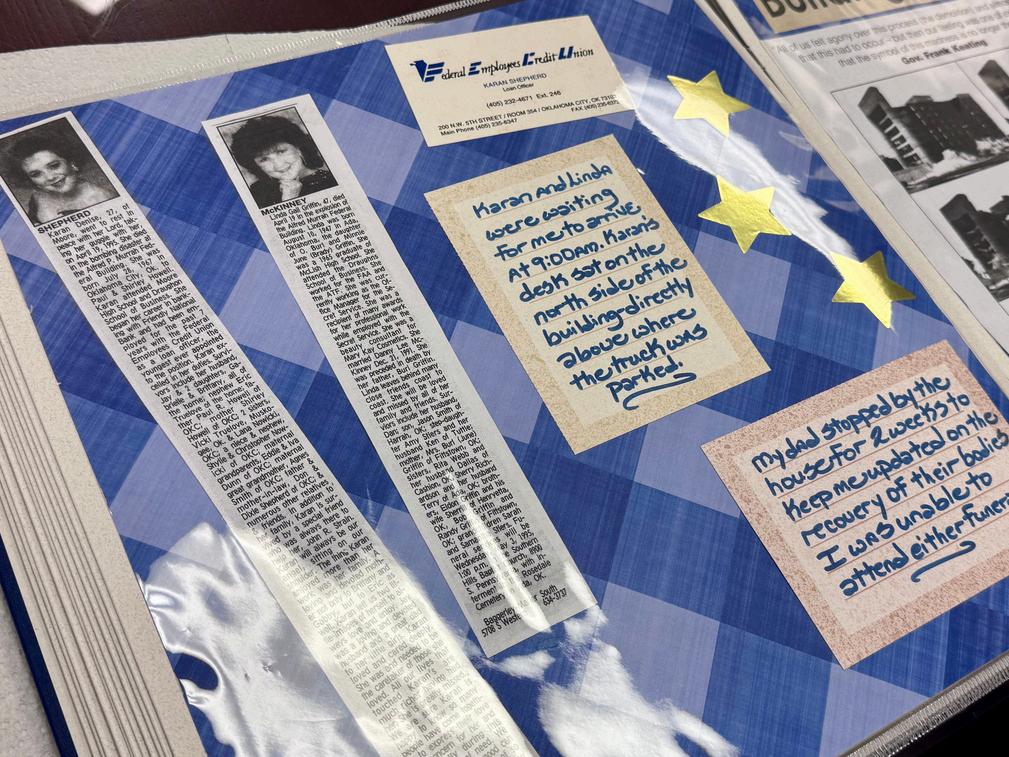
“I always knew some good was going to come of this,” Dianne reflected. “My anger wasn’t at God for what had happened to me, but for those who died. I had hope that I would be restored, and that the church would be restored. Iclungtothathope, andtogetherwehelpedhealeachother.”
Dianne is candid about the fact that even after the bombing, dark and trying days lay ahead of her She wrestled with ‘survivor's guilt ’ Other trials came in the form of two miscarriages, including one at 20 weeks “The church and my faith played a big role in my life as I recovered from these situations,” Dianne said “I remember the church really coming alongside me during these dark times I also learned that you think you can plan and control things, but you simply cannot. That was true on April 19, and it was true as I dealt with the loss of two pregnancies.”
Thankfully, after a long struggle, Dianne and Jim welcomed their beloved daughter Keely in 2001.
Life, Dianne believes, is all about timing planned and unplanned. It isn’t lost on her that if she hadn’t been called back to her office that morning, she would have perished. Among the 168 who died that day were colleagues waiting for her at that meeting. A split-second decision saved her life but changed it forever. “But I would go through it all again just to find this church,” Dianne shared, her voice filled with gratitude.
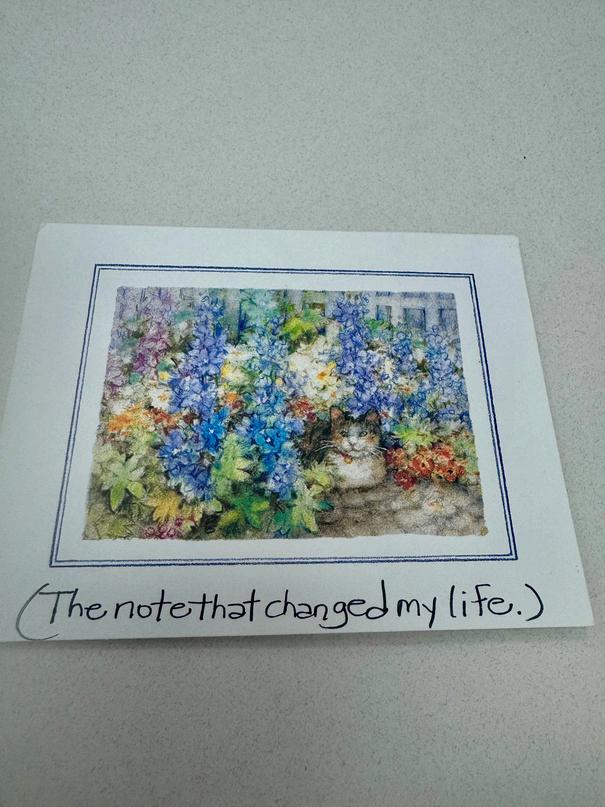


The note that changed Dianne’s life.

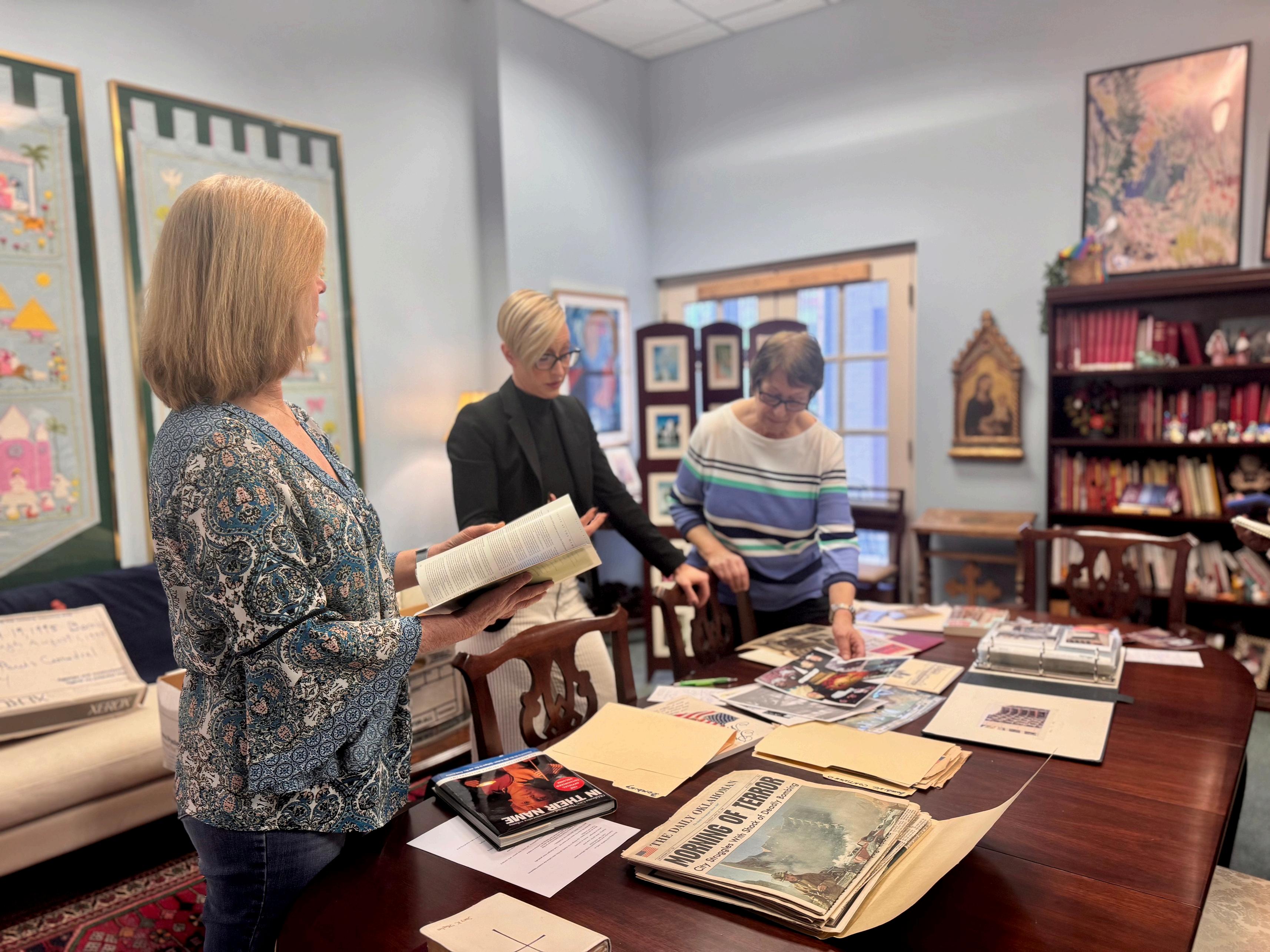

Dean Churchwell reviews archives, shares stories, and visits the Memorial Gates with Dianne Dooley and Susan Urbach. Susan Urbach and David Ponstein share a tender moment.
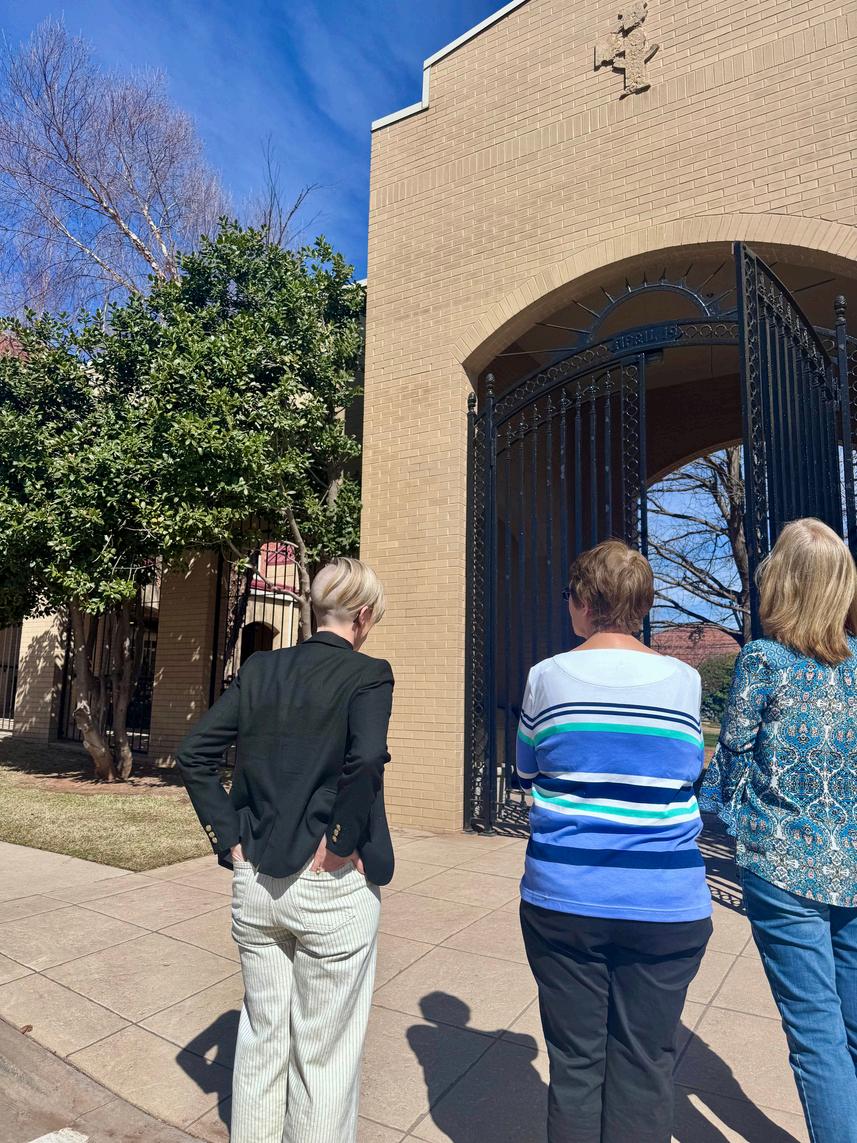
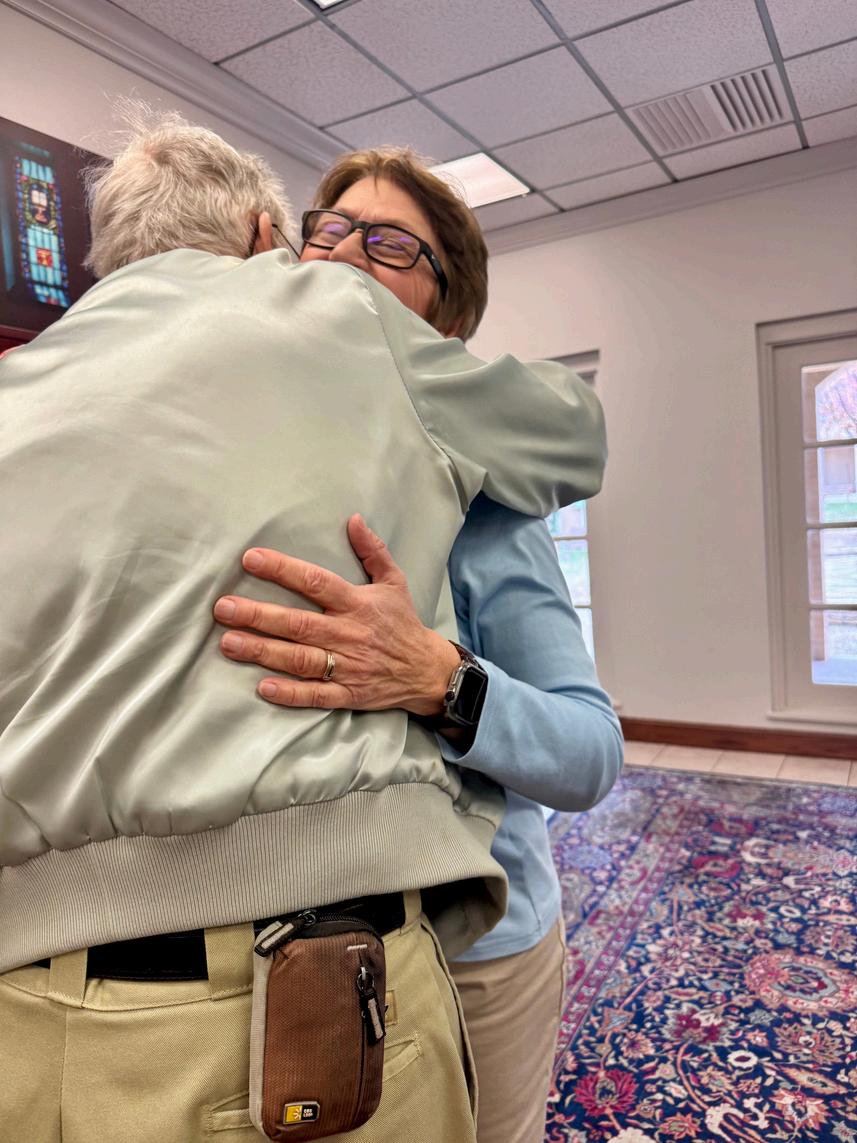
Editor’sNote:MalcolmMay,widowerofKathyMay,wasinterviewedforthisstory,alongwith DeanGeorgeBack,whoalsoshareddetailsofKathy’sexperience.
Kathy May was a cornerstone of St. Paul’s Episcopal Cathedral, a beloved member of the community who served as Parish Administrator from 1991 until her retirement in 2005. As the administrative backbone of the church, she carried a unique responsibility, managing the day-to-day workings of the cathedral with grace and efficiency Her presence was constant and reassuring a steady anchor in both peaceful and turbulent times
On that fateful April morning, Kathy was approaching the back gate in the north parking lot, preparing to open the cathedral for the day. It was almost 9 a.m. when a Mobile Meals volunteer called out, asking for her help with unloading items to bring up to the kitchen. Ever the kind-hearted helper, Kathy paused her routine, turned from the gate, and went to assist. It was in those moments, as they were gathering the items, that Kathy’s life was spared. Just as she reached for the door, the unimaginable happened
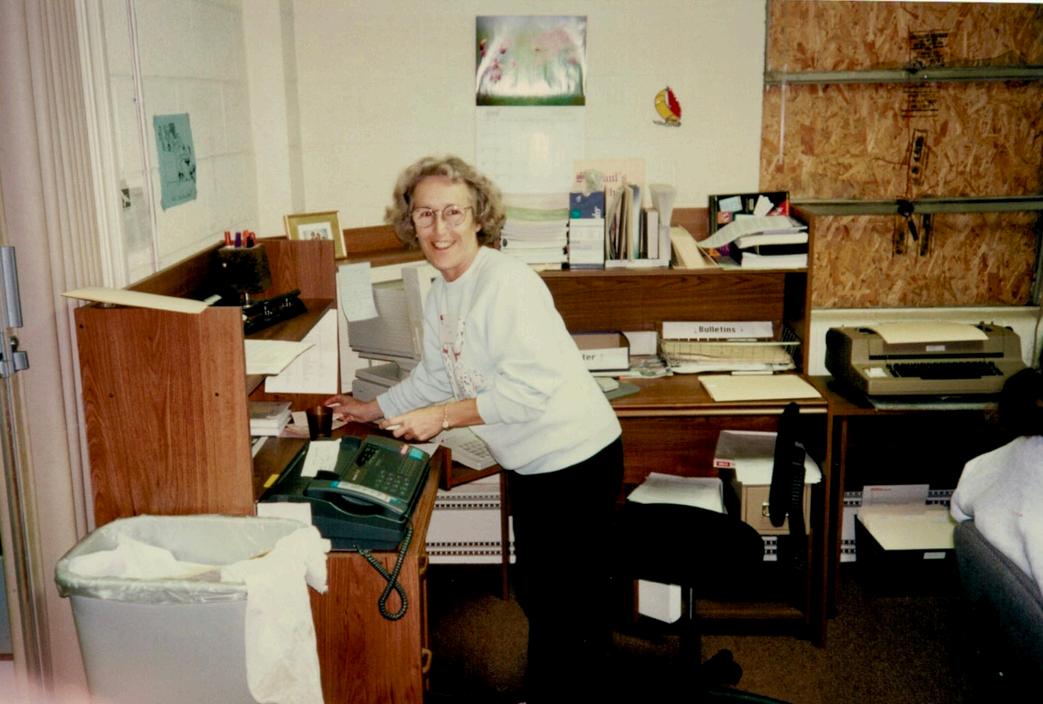

The ‘Unstoppable’ Kathy May at the Cathedral Offices, windows boarded post bombing.
At 9:03 a m , the ground beneath them trembled violently The force of the blast from the bombing downtown hit with such intensity that the cathedral itself seemed to heave upwards The bricks of the entryway, which Kathy had been about to open, shattered in her hand. The building groaned and shifted, shaking loose pieces of its structure. Miraculously, Kathy was still outside, away from the falling debris.
Meanwhile, miles away at his machine shop, her husband Malcolm felt the terrifying shockwave of the explosion "It felt like the earth had cracked open, " he recalled Looking toward downtown, he saw smoke billowing in the distance. His mind immediately went to Kathy. Was she safe? What had happened? Malcolm rushed to his car, heart pounding, fearing the worst as he sped toward the cathedral.
When Malcolm arrived, the scene was chaos People were scrambling to make sense of what had just occurred Emergency vehicles lined the streets, and a pervasive sense of shock gripped the air. For Kathy, the moments immediately following the explosion were a blur of confusion and fear.


Malcom May visits his wife, Kathy’s niche in St. Paul’s Columbarium.
Kathy, along with others from the cathedral, were evacuated to 10th Street due to the threat of a second bomb. The cathedral’s surroundings had been transformed into a militarized zone. FBI agents and rescue workers flooded the area, and recovery and armory vehicles filled the north parking lot, a somber reminder of the gravity of the situation.
What Malcolm remembers most vividly from that day were the faces and gestures of kindness amidst the devastation. "I’ll never forget Jim Pontius," Malcolm recounted "He came up Robinson Avenue carrying a carafe of coffee and cups, offering coffee to anyone who wanted it Even in the face of such horror, people were trying to care for one another " It was a small but profound moment, one that epitomized the spirit of the St. Paul’s community a community that would be pivotal in helping everyone through the difficult days to come.
The FBI interviewed Kathy and others multiple times as they tried to piece together the details of the bombing. Kathy, having grown up in the UK during World War II, recognized immediately that the explosion was from a bomb. She had lived through the bombings as a child, and the sound, the destruction, the sheer magnitude of the blast it all felt tragically familiar "We knew," Malcolm said "Especially when you got downtown and closer to the site You could see it You could feel it."
Kathy and Malcolm, both born in the UK, had been married for 64 years by the time of her passing. They had met as teenagers, two schoolchildren who grew up together in the shadow of war. It was a bond that made them resilient, a couple who had seen darkness but chose to build their lives on faith, love, and community Living through the bombing as adults, after a childhood marked by the horrors of war, perhaps made them sturdier, heartier souls But even the strongest hearts can break, and the events of that day left an indelible mark on them both.
Shortly after the bombing, Kathy and Malcolm became members of St. Paul’s Episcopal Cathedral, a place that had become their sanctuary. Kathy’s calm, confident presence, her unshakable faith, became a source of strength for many who remembered her during and after the bombing. She remained a fixture at the cathedral, a steady hand in a time of overwhelming grief and confusion Even as the cathedral’s north parking lot became a staging area for military vehicles and barricades lined the streets, Kathy kept working, kept serving, kept believing Kathy’s story, like so many from that day, is one of grace under pressure, of quiet heroism in the face of unspeakable tragedy. For Malcolm, the memory of his wife and the community that held them together in the aftermath of the bombing is bittersweet. "We were blessed by the people of St. Paul’s," he says. "Itwasthefaces,thekindness,thesharedgrief, andfaiththatcarriedusthrough.WithGod’shelp,wefoundawaytokeepgoing."
Kathy May’s life was a testament to resilience, faith, and service. She navigated the darkest of times with quiet strength, and her legacy endures in the hearts of those who knew and loved her. Though she is no longer with us, the impact she had on the cathedral and its community will never be forgotten. Her story, like the story of St. Paul’s, is one of hope, perseverance, and the unwavering belief that, with God’s help, we can weather even the most violent of storms.
19|SpiritusGladius





April 1995 photos show barricades and fencing surround the area, an emptied cathedral ready for repair, cracks in the walls, and sunlight shining through dormers opened by the blast.




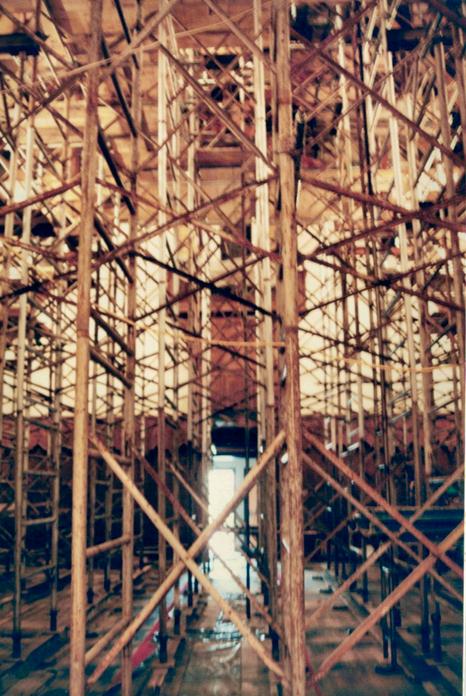
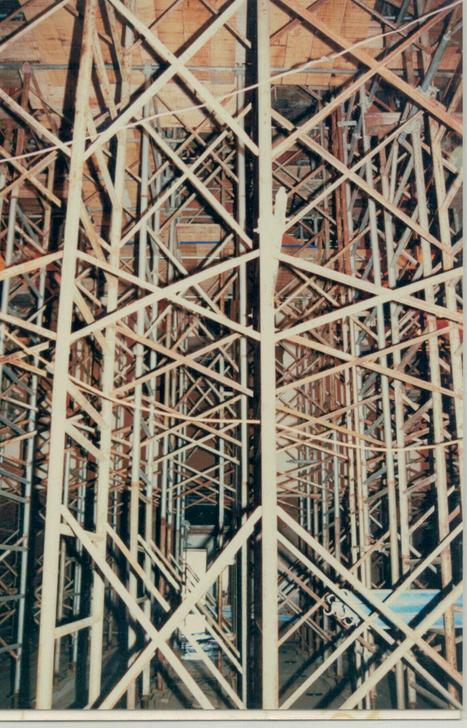
Scaffolding wraps the outside and inside of the St. Paul’s Episcopal Catheral and surrounding buildings during reconstruction and renovation.



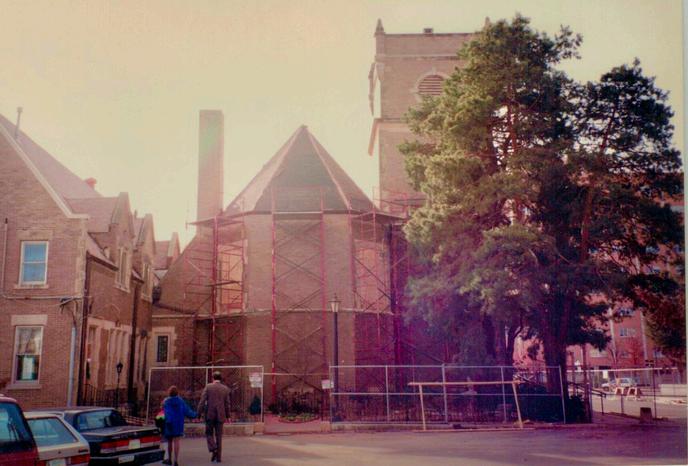

Thecrossquickly becameasymbol tous,thenation, andtheworld thatwewere brokenand damaged,butstill

The Broken Cross sits atop St. Paul’s Episcopal Cathedral, April 19, 1995


The roof of St. Paul’s Episcopal Cathedral experienced extensive damange due to the bombing of April 19, 1995.
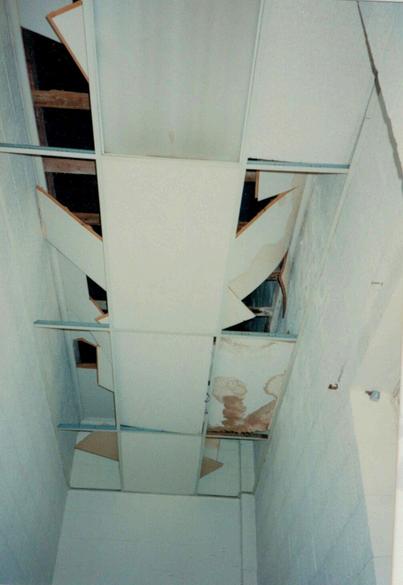


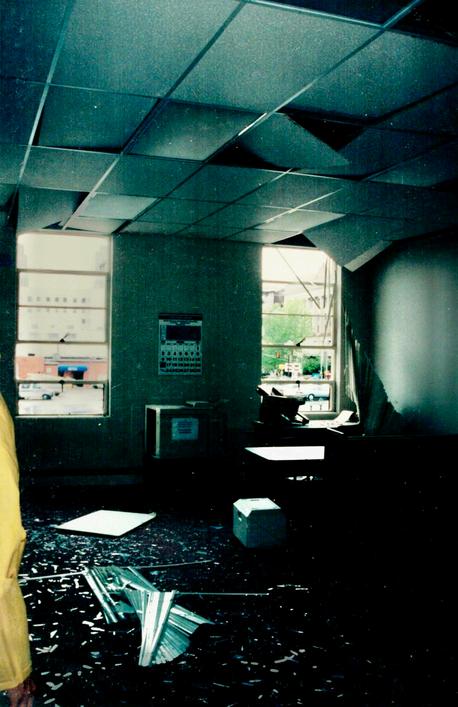
Shattered glass, blasted out windows and ceilings, and clean up efforts..
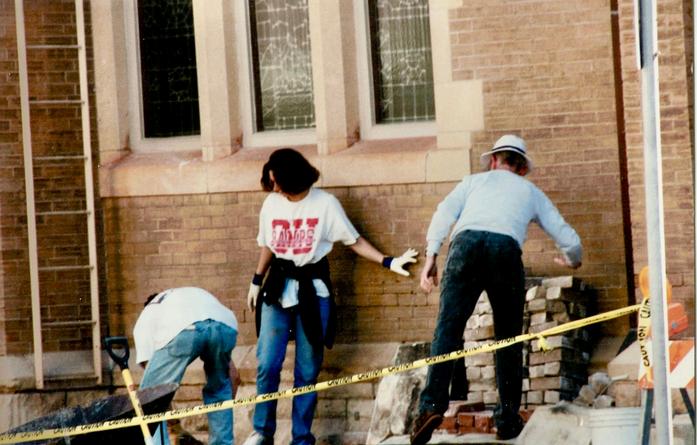
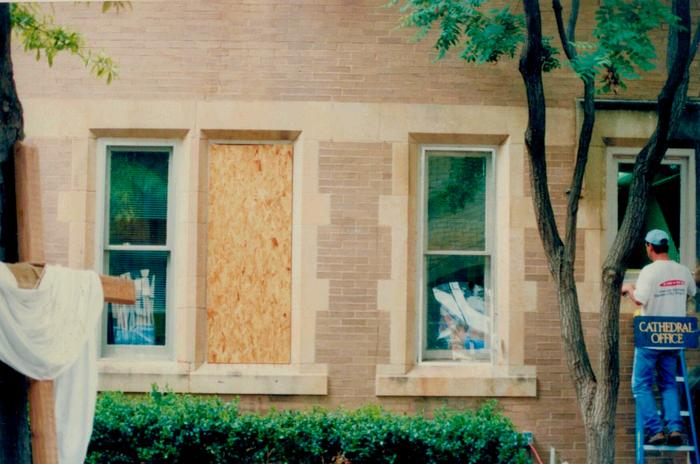
Forallthehorror, therewassuch light…People checkedoneach other,andevery storyfromthatday carriesathemeof helpersandgoodness.


Caroline and Robert Dennis, longtime members of St. Paul’s Cathedral, recall the haunting and lifealtering events of April 19, 1995, with a mix of deep sorrow and resilient hope. That spring, life was finally beginning to feel normal again for them, having recently navigated the grief of Robert’s mother’s death and the difficulties of an especially harsh winter. Robert reflects, “Life was just starting to feel normal again with the celebration of Easter.” The warmth of that season was marked by a meaningful connection with Susan Urbach, who had become like family, spending time with Robert’s mother during her transition
The morning of April 19 changed everything. Caroline and Robert were both working at the Oklahoma State Capitol when the bombing happened. “Six stories of granite shook like Jello,” Robert remembers. They were evacuated out of concern for structural damage or further attacks Knowing their two-year-old daughter, Hannah, was safe in daycare, their thoughts turned quickly to action. The couple walked to the Oklahoma Blood Institute, hoping to give blood, only to find hundreds already in line. They soon redirected their concern to St Paul’s Cathedral
That first Sunday after the bombing, April 23, 1995, was surreal. The Dennises recall having to park on 10th Street and walk over broken glass, scooping up little Hannah so she didn’t trip and fall. “You could still smell the Murrah Building burning those four days later,” shares Caroline. The sanctuary, still unsafe, forced the congregation to gather in Dean Willey Hall, quickly transformed into a worship space. "There was a press box full of reporters, curious to see what we would do," Robert shares. The weight of the tragedy was evident in every corner broken windows, fallen ceilings, and the sense of devastation hanging in the air. But amidst the destruction, the music, led on a simple organ or keyboard, was a balm..
For the Dennises, the story of the Cathedral’s restoration was a journey of patience and profound community effort "Nothing was quick about the restoration," Robert reflects Artisans and craftsmen across the city were swamped with work, restoring historical buildings after the widespread damage. Robert’s father, Frank Dennis, alongside Steve Parker and many others, worked tirelessly on the Cathedral’s intricate repairs. It was a labor of love, complicated by the inadequacy of insurance to fully understand or support the community’s unique needs.
Throughout this time, the Cathedral's dean, George Back, embarked on a personal spiritual journey, grappling with the magnitude of the evil that had struck their city. "He wrestled with the evilness of it all," Robert says, reflecting on how Dean Back helped the community navigate their shared trauma by reminding them that Christ’s love was bearing the weight of their pain
Caroline and Robert draw strength from the countless stories of love and resilience that arose out of such a dark time. Caroline shares, “This awful tragedy led to moments of resurrection in our community and taught us to love even more fiercely today ” Robert adds, “It brought us together instead of tearing us apart.”
For the Dennises, it is the people their faces, their hands, their hearts that made the difference. Whether it was working beside fellow parishioners to patch broken windows or walking with bombing survivor Dianne Dooley in the Memorial Marathon, St. Paul’s Cathedral showed up for one another. “For all the horror, there was such light… People checked on each other, and every story from that day carries a theme of helpers and goodness,” Caroline reflects. The Cathedral, at its core, is about the culture of caring people standing alongside one another, day after day, through unimaginable tragedy and beyond.

Today, a piece of the Cathedral that fell on that fateful day rests on the front porch of the Dennis’ home, a permanent symbol of their love for the church that has been a foundation in their lives It is not just a stone, but a testament to their unshakeable faith in the resilience of a community bound together by God’s love.
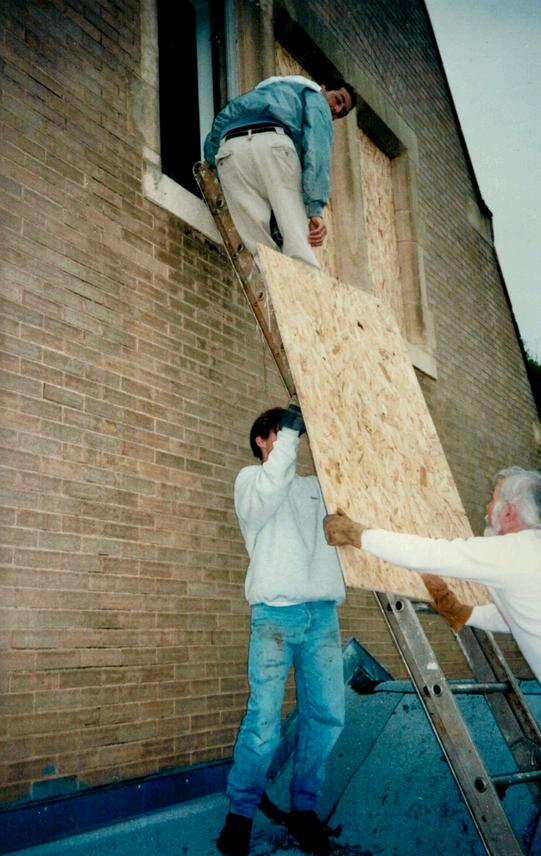

Volunteers board cathedral windows afterthe bombing.


Musicbecame ananchorfor St.Paul’s,a constant presencewhen everythingelse hadbeenshaken.
Scott Raab served an extraordinary 44 years at St. Paul’s Episcopal Cathedral as the beloved Canon Musician, the longest tenure of any clergy or staff in the cathedral’s history. His deep connection to the cathedral is undeniable, particularly to the events of April 19, 1995, and the profound role that music played in the community’s healing and restoration in the aftermath of the bombing
On that fateful morning, Scott was enjoying a rare leisurely moment, drinking coffee with friends after an exhausting Holy Week and Easter season. The explosion shattered that peace, sending shockwaves through the city. Rushing immediately to the cathedral, he spent the rest of the day, and the days that followed, preparing Dean Willey Hall for Sunday services. It is not lost on Scott that had he been in his music suite on the second floor of the Parish Hall, he could have been critically injured or even killed by the blast. “I still can see my desk covered in shards of glass,” he recalls.
Upon arriving at the cathedral, Scott first checked in with those gathered in Dean Willey Hall, absorbing the shock and devastation unfolding around him. Not long after, he and Dean George Back stepped inside the cathedral building itself, witnessing the wreckage firsthand Dust filled the air, dormers were blasted outward, and light poured in through the gaping wounds in the structure. Amid the chaos, Scott made his way to the organ and attempted to play. Silence. The instrument, a vital voice of worship, was gone. “In that moment, I didn’t get emotional that came later,” he reflects “From a logistics standpoint, I also didn’t realize how long it would be before we had another organ or how deeply we’d feel the loss.”
Music is not an accessory to worship it is its heart and soul Scott knew this truth instinctively and fought to maintain musical continuity in the congregation’s darkest days. His first priority was keeping the choir together, ensuring their voices would continue to rise in song. Within days, he secured an electric organ from OU’s St. Anselm of Canterbury, allowing music to fill the temporary worship space in Dean Willey Hall “The very first Sunday was surreal,” he remembers “The choir of any church brings cohesion, consistency, and stability. Their presence was essential to our healing.”
Navigating the logistics of worship during reconstruction was daunting. Offices were displaced, routines disrupted, and everything seemed to shift from week to week. “We did the best we could,” Scott says. “We had no choice but to adapt.” The challenges of restoration were immense, but Scott credits project manager and parishioner Marilyn Smotherman for her steady leadership. “She kept us focused on what mattered most: the congregation.”
As discussions about a new organ began, Scott embarked on a journey to research sacred instruments across North America He visited Massachusetts, Canada, Champaign-Urbana, and San Antonio, ultimately selecting the renowned Buzard Organ. “At the time, the organ cost around $350,000," he says. "Today, it could be worth $1 to $2 million.” Once installed, the new organ required adjustment Every instrument is unique, and musicians must learn its nuances, discovering the intricate ways its sounds blend in the space. “I have to credit Dean George Back,” Scott says. “He really had the vision to place the new instrument and choir in the loft. It was a major change to move the choir and organ to the back, but it transformed our sound.”
The cathedral’s former organ found a new home at St. Paul’s Episcopal Church in Altus, Oklahoma. Larger than its successor, it had stood in the chancel at the time of the bombing. “The loft didn’t exist in 1995,” Scott explains. “It was part of the reconstruction, along with the addition of the Oakerhater Chapel where the old organ had once stood.” Urgency drove the process cleaning contracts were signed, restoration efforts accelerated, and the old organ had to be removed quickly. Though it survived the blast, sustaining mostly dust-related damage and a few fallen pipes, Scott has never returned to Altus to play it

Despite the grief and upheaval, there were moments of joy that Scott cherishes. “The first service back in the cathedral was glorious,” he says. He also chuckles as he recalls the Christmas Eve service when a stray cat wandered into Dean Willey Hall and was adopted by longtime members Fran and Gary Derrick And then there was the infamous samba incident a mishap where he accidentally hit a button on the organ, triggering a pre-programmed samba beat that played unexpectedly over the hymn. “We just had to push through it,” he laughs. And, of course, the music of sacred celebrations remained unforgettable, including the wedding of Susan and Larry Joplin, which filled Dean Willey Hall with immense joy and song.

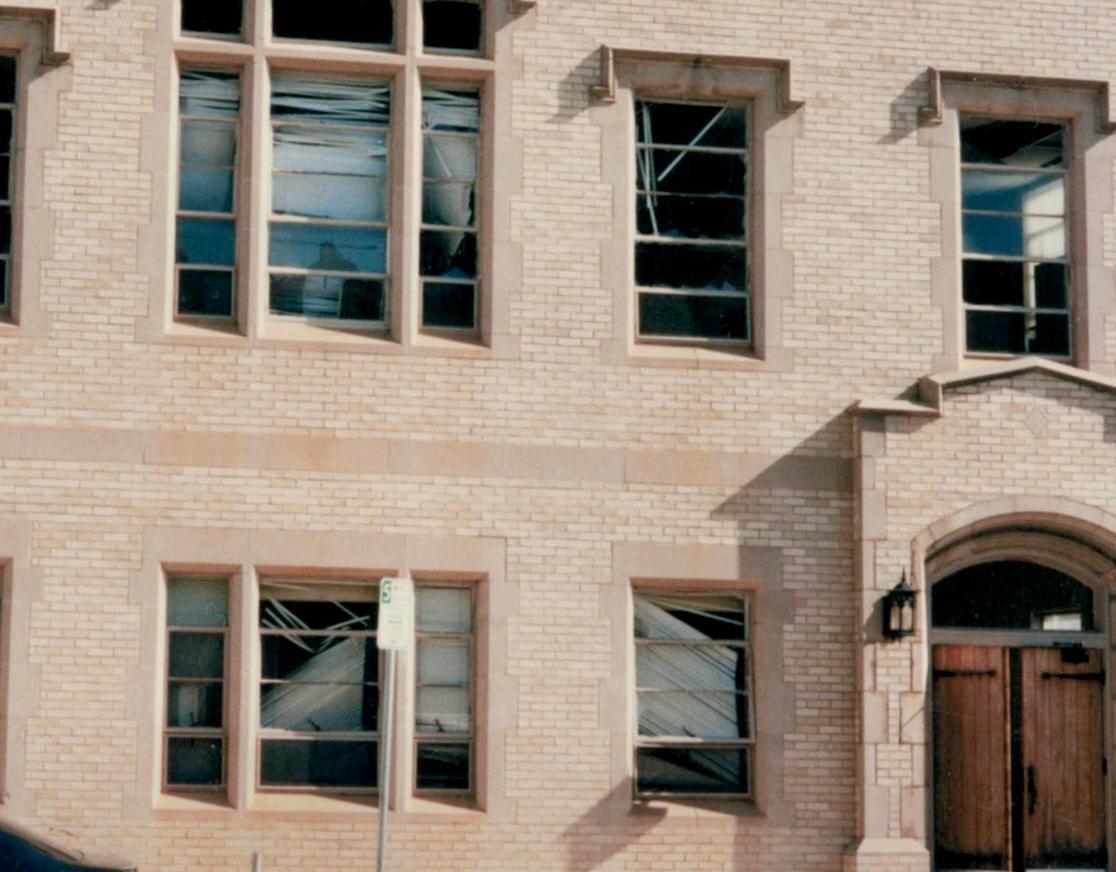


In the photos above, Scott Raab’s office w (L to R): Scott Raab meeting with Dean George Back in 1995, the damaged o from the blast, and Scott in 2025, sharing stories while reviewing archival photos.

“I firmly believe music played a vital role in the healing of the congregation,” Scott says. Music does more than accompany worship; it speaks when words fail, soothes wounds unseen, and binds communities together in the face of sorrow. After the bombing, music became an anchor for St. Paul’s, a constant presence when everything else had been shaken.
Scott continued to serve the cathedral faithfully until his retirement in 2022, completing his final year in collaboration with current Canon Precentor Joseph Ripka. His legacy is woven into the very fabric of St. Paul’s, a testament to the power of music to restore, uplift, and heal.
The story of St Paul’s is one of resilience, and Scott’s journey is interwoven with that legacy Through their darkest days, music carried the congregation forward into hope, into healing, into light. It reminds us that even after destruction, beauty rises again in soaring voices, sacred melodies, and the enduring spirit of a community bound by faith and song.
April1995, DeanWilleyHall, readyforworship.

Ifirmlybelievemusic playedavitalrolein thehealingofthe congregation.Itspeaks whenwordsfail, sootheswounds unseen,andbinds communitiestogether.
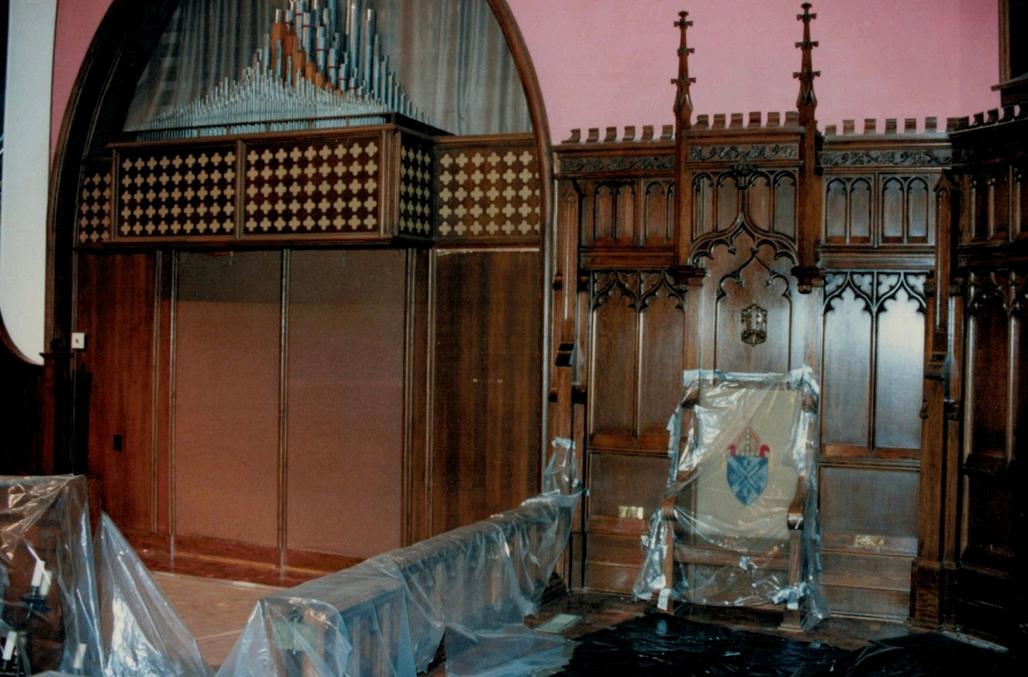
Theoriginalorganpipeswhere OakerhaterChapelnowexists.


"Theyjustbrought theirwholecrew... theyknewwhatto doandtheyhadthe exactmaterials needed.Thatwasa thing,noquestion."
John Koons had no idea how deeply the events of April 19, 1995, would change his life when he woke up that beautiful spring morning. As a dedicated member of St. Paul’s Episcopal Cathedral and newly elected president of the Guild of St. George, the day started like any other with early meetings and errands However, by the end of that day, the world, particularly in downtown Oklahoma City, would be irrevocably altered.
John recalls the clarity of that morning: the shining sun, a hint of warmth in the air, and a routine he could almost perform without thinking. After attending his first board meeting as the new president of the Guild of St George at 7 a m , he picked up a fellow board member and fellow churchgoer, Joan, and dropped her off at the downtown library before heading to work. At the time, John was working at 101 North Robinson, a building just south of the Alfred P Murrah Federal Building
He describes the exact moment the explosion occurred with vivid clarity. John had just arrived at work and was on the phone with a colleague when the bomb detonated at 9:02 a.m., just four blocks away from his office The sheer force of the blast shook the building he was in "All of a sudden, a humongous explosion went off," John recounts, recalling the panic and confusion in the moments immediately following. "I was talking to a friend on the phone, and I just said, 'Linda, I’ve got to go. Something horrible just happened downtown.'"
Like so many others in the city that day, John and his coworkers at OG&E initially assumed it had been a gas explosion. It wasn’t until they turned on the TV and saw the devastation that they began to realize the true scale of what had occurred. Even then, the idea of a deliberate bombing was too horrific to consider at first But as helicopters began circling the area and the extent of the destruction became clear, John remembers a chilling realization that a colleague standing beside him stated: “Somebody bombed that building.”
As downtown Oklahoma City was evacuated, John’s thoughts immediately turned to his mother, who lived nearby, and to St. Paul’s Cathedral. "The first thing I thought of was, oh my God, I hope St. Paul’s is okay." The church, located just blocks from the bombing site, had become an immediate sanctuary for rescue workers and volunteers Joan, the woman John had dropped off at the library that morning, had gone directly to the cathedral to assist with mobile meals in the kitchen.
Later that day, John received a call from Cheryl Allen, the wife of the cathedral’s Junior Warden, asking if he could come down to the church. When he arrived, he was met with a scene of chaos and devastation but also resilience "I just remember seeing the place, seeing the Dean’s face, and Susan’s face... it was a nightmare," John says. But amidst the destruction, something miraculous happened. Porter Morgan, a cathedral member, called in his crew of contractors, who had been working on his home, to come to the cathedral and repair the damage "They just brought their whole crew they knew what to do and they had the exact materials needed. That was a God thing, no question."
With their help, St. Paul’s Cathedral became a hub of activity and relief efforts in the days following the bombing Rescue workers flooded in, and the cathedral kitchen became a place where they could find food, rest, and solace. John vividly remembers a request from the authorities asking if the cathedral could have dinner or sandwiches ready for 200 rescue workers by 6 p.m. that day. The answer was simple: "We’ll do it "
As the dust settled, John’s role at the cathedral shifted. On Saturday, April 22, following the bombing, St. Paul’s held a big workday to begin cleaning up and repairing the building. Dean George Back asked John to take charge of the phones Having been a lifelong member of St Paul’s, the Dean felt John’s voice would be a source of comfort to those calling in, desperate for news. "I was happy to help," John says with humility. "I tried to keep a positive attitude, of course, to keep things uplifting."

Through the chaos and heartache, St Paul’s Cathedral remained a place of hope and healing, a testament to the strength of its community. John Koons' experience on April 19, 1995, is a story of resilience, service, and dedication in the face of unimaginable tragedy. His efforts, along with those of so many others, helped the church rise from the rubble, providing a beacon of light in the darkest of days

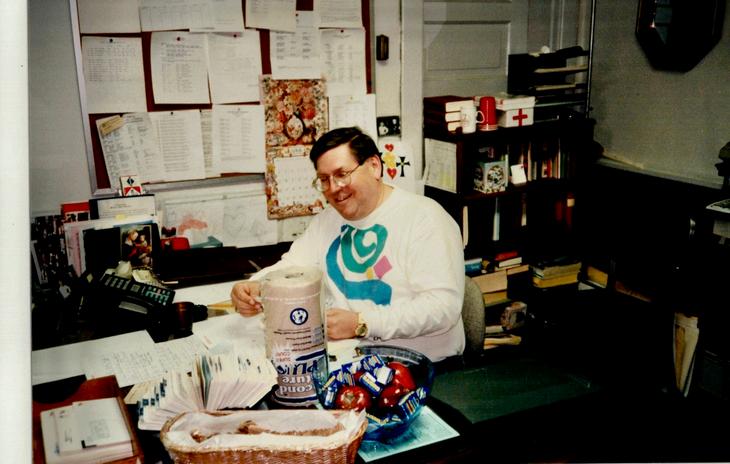


Godhealedus… Hetookthemost evilthingthatcould happenandbrought ustogether.Wewere undividedand unstoppable,both asachurchandasacity
Jo Martin still vividly remembers the smell of April 19, 1995, and it continues to haunt her dreams “It is hard to describe,” she says, “but the smell even coated your tongue and made you want to spit.” The memory of that day stayed with her for years. Years later, on September 11, 2001, while watching the tragic events of 9/11 unfold on television, Jo suddenly began to spit and could smell the same smell again a visceral connection between memory, sight, and sound.
A longtime member of St. Paul’s Cathedral since the early 1990s, Jo has a unique and harrowing story as she was physically on the cathedral grounds when the bombing occurred
That fateful morning, Jo had an appointment at the Social Security office (SSI) downtown. Struggling financially with two young children, she was hoping for good news and resources for her family. She parked in what was then St. Paul’s North Parking Lot, specifically to save money on parking closer to the SSI building, planning to walk over when it opened at 9 a.m. Before leaving, Jo breezed into the cathedral office, shared a quick hello to Father Stan Donham, then exited to head toward the SSI office.
At 9:02 a m , as she was halfway across what is now the cathedral’s south (front) parking lot, a massive explosion knocked her off her feet. Dazed, Jo managed to stand up, though she realized she couldn’t hear out of one ear. Her ear would later bleed from a rupture caused by the blast. Shaken but able to move, she describes the scene around her as chaotic
Not knowing what had happened, Jo returned to the cathedral. “At that moment, we knew something awful had happened, but we didn’t know what it actually was, ” she recalls “Everyone suspected a gas leak that led to an explosion ”
With her children on her mind, Jo rushed home to Yukon to check on the family, but returned very quickly to St. Paul’s where she joined others in their relief efforts to begin to assist with preparing food for first responders “I was back by mid-afternoon and started carrying sandwiches down to the helpers.”
She vividly recalls familiar faces that became fixtures in the church’s response: Heather and David Branscom, Nick Irza, Jim Pontius, David Ponstein, and many others. Together, they carried sandwiches down 7th Street toward what is now the newer federal building, delivering food to first responders Jo remembers David Branscom hauling drinks in a heavy container as they worked alongside others to provide comfort and nourishment amid the devastation.
Reflecting on that time, Jo says, “God healed us… He took the most evil thing that could happen and brought us together We were undivided and unstoppable, both as a church and as a city.”
It’s not lost on Jo that a small decision choosing to park at the cathedral to save money ultimately saved her life. “I never once considered myself a victim,” she shares “I always considered myself a survivor because I never wanted to feed into the negative ‘hoopla’ that surrounded the events of that day.”
To this day, Jo wears her broken cross necklace as a reminder of the resilience of both the church and the city “How far we ’ ve come! God prevailed! We wear the iconic broken cross as almost a talisman. We all came back from it. The worst thing that could have possibly happened happened. And God prevailed.”

For Jo, the broken cross holds an additional, personal meaning it is a tribute to Nick Irza, a beloved member of St Paul’s and the artist who designed the mold used for the broken cross jewelry. Nick, who served on the Altar Guild and helped with cathedral décor, was also known for his roles as the Easter Bunny and St. Nicholas. The broken cross of St. Paul’s serves as a symbol of faith, resilience, and the bond of a community that came together in the face of unimaginable tragedy
Through the pain and loss, Jo and her community at St. Paul’s Cathedral have emerged stronger, holding fast to their faith and each other. For Jo, the broken cross is not just a reminder of that dark day, but a symbol of hope, healing, and the enduring spirit that defines both her church and her city.

OneofthefewphysicalremindersDavidstill keepsfromthateraisthebadgeissuedbycity officials.Itgavehimaccesstothecathedral amidstthechaosofemergencyrespondersand restrictedzones,asmalltokenofhis unwaveringpresenceduringtherestoration. Insert:Davidevaluatesscaffoldinginthe cathedralduringrenovation.
David Ponstein’s story is one of quiet heroism—an unflinching man who stood at his post, looked devastation in the eye, and worked tirelessly to restore the sacred ground he had been entrusted to protect. In the face of unspeakable tragedy, David embodied the spirit of St. Paul’s: faith in God, faith in each other, and a belief that, together, they could rebuild what had been lost.


David Ponstein’s journey at St Paul’s Episcopal Cathedral is inseparably tied to the space itself, a space that withstood devastation but stood tall in the face of terror. As the Facilities Coordinator on the day of the bombing, David's hands were the ones responsible for keeping the heartbeat of St. Paul’s alive amidst the rubble His story is one of quiet strength, resilience, and the profound sense of duty that arose from his connection to the building, its people, and the sacred soil on which it stands.
David had joined the cathedral’s staff in 1991, just after retiring from a long and honorable career with the U S Coast Guard His role was far from glamorous but essential coordinating vendors, addressing repairs, and ensuring that the sacred space was always in working order. On the morning of April 19, 1995, his focus was on solving the cathedral's persistent alarm issues He was in a meeting with Bob, a repair technician from ADT Alarm Systems, at 9:03 a.m. when everything changed.
“We were in the Chapter Room of the Parish House, just going over the alarm system when we heard the loudest boom,” David recalls "The ground shook violently, and Bob and I just looked at each other, wide-eyed, and said, ‘What was that?’” In those seconds, their world shifted from the mundane routine of fixing alarms to confronting one of the deadliest acts of domestic terrorism in U.S. history. Stunned but instinctively driven to action, David and Bob stepped outside to assess the damage The skyline of Oklahoma City was filled with dust and chaos, as a city began to unravel under the weight of unimaginable loss. Bob soon left to check on the ADT office, located in a firefighter building nearby. David, on the other hand, remained at the cathedral, his responsibility now shifting from facilities management to crisis response.
“The first thing I did was check the gas lines,” David remembers. “The Dean, George Back, came out at the same time, and we both stood there, not knowing fully what had just happened, but knowing we had to do something ”
As debris from the explosion continued to rain down, the roof of the cathedral began to crumble. Concrete slabs slid from the main roof, a haunting reminder of how fragile the structure truly was. Yet, amid the destruction, divine providence had somehow protected St. Paul’s. Though extensively damaged, it had withstood the blast better than many surrounding buildings.
In the following hours, David and Dean Back scrambled to gather the parish’s resources They brought in parishioners who had construction workers at their homes to help board up the windows and reinforce the structure. David’s experience in logistics and crisis management from his Coast Guard days kicked into high gear. “We had to figure out how to keep going. We tried to maintain as much normalcy as possible, even when nothing was normal anymore ” The faces of those who gathered around the cathedral in the days following the bombing are etched into David's memory people like Bill Smith, a retired OKC Master Sergeant who had guarded the cathedral during evening events, stepped up to provide support in whatever way he could St Paul’s became a sanctuary of hope for the city, even as fencing and barricades went up around its perimeter to protect what was left. To this day, David points out patches on the ground where the barricades once stood, scars on the soil that serve as constant reminders of that dark time.
For David, this period in the cathedral’s history cannot be remembered without gratitude for the generosity of the Nesbit family. “The Nesbits made the cathedral what it is today. Mother Margo Nesbit and her husband convinced the owner of the current administration building and land to sell it to the cathedral when he wouldn’t before, and they purchased and donated the land that became our south parking lot,” David recounts with admiration. “Their generosity shaped St. Paul’s as we know it today.”
But his admiration for Mother Margo Nesbit went beyond her philanthropy they shared a special connection, a bond deepened by the fact that they shared a birthday. “She and I shared more than just that day; we shared a commitment to this space and this community.”

David's unwavering dedication would see him through the years of reconstruction and healing that followed He remained as Facilities Coordinator until his retirement in 2007, after 16 years of service. His tenure at St. Paul’s extended far beyond his job description it became a calling, a testament to his faith and devotion to a community that refused to be broken
“I couldn’t walk away, ” David reflects, his voice steady but filled with emotion. “After the bombing, we all felt the weight of what had happened, but we also felt a profound responsibility to keep going to rebuild, not just the cathedral, but our sense of community. This space wasn’t just a building; it was where we found each other again It was where we prayed, wept, and healed. God’s hand was in everything, and the people, their faces, their hands, are what got us through.”




Carol Howard’s journey to St Paul’s Cathedral was a story of unexpected paths, resilience, and profound community. A business professor living in Hawaii when the bombing of April 19, 1995, took place, Carol’s awareness of the event began from afar. “I sensed it was a national tragedy, not just a local one It may have happened directly to Oklahomans, but the impact was national,” she recalls. At the time, she could not have predicted how closely her own life would soon intersect with Oklahoma City.
By May of 1995, Carol found herself traveling from Hawaii to Oklahoma for an interview, driving by the haunting remnants of the Murrah Building just a month after the bombing. “It was eerie and even scary, driving by the skeleton of the building,” she reflects. Three months later, in August, Carol had moved to Oklahoma City to start her new role at Oklahoma City University She began to look for a church community, attending All Souls for a time, but something didn’t quite click.
Shortly after moving to Oklahoma City, Carol decided to attend her first service, held in Dean Willey Hall due to the extensive renovations. “There was debris everywhere; you still had to step over stuff to get in,” she remembers But amidst the visible signs of destruction, Carol found something unexpected. “It was the warmest place to be! I recall having coffee, and everyone was just so nice,” she shares. It was then that she met Sherry Sullivan, a connection that would be the first of many important friendships forged in the aftermath of the tragedy
On that same day, Carol also met Mother Margo Nesbit, who, along with Father Stan Donham, led the cathedral’s pastoral care ministry. In the wake of the bombing, Margo and Father Stan were working overtime to support the community’s healing. For Carol, meeting Margo that day would be the start of a lifelong friendship. They bonded over their shared faith and love for the church, and their connection deepened over the years. Carol fondly recalls a memorable trip she and Margo took together to England, Margo’s homeland It was a trip filled with laughter, cherished moments, and gratitude for the friendship that had blossomed from the tragedy that first brought Carol to St. Paul’s.
Carol’s early days at St. Paul’s were shaped by the people she met faces that became more than acquaintances, a community that embraced her during a time of healing and rebuilding. She remembers meeting Vicki Norrick, who played a critical role in securing the materials needed for the cathedral’s repairs, and the collective efforts of the congregation to support rescue workers still on the front lines “Everyone was lending a hand in some way, ” she says, reflecting on the deep sense of unity that bound the community together during those difficult days.
One of the most poignant moments for Carol came on the first anniversary of the bombing, when survivor Susan Urbach took the microphone to share her story as that day’s sermon. Susan, who had been badly injured, held up a piece of glass that had been removed from her body a tangible reminder of the pain she carried, yet also a testament to her survival. “I liked Susan so much,” Carol shares, “and we ’ ve ended up friends to this day ”
Running became a form of therapy for Carol and many others in the St. Paul’s community, leading to the formation of a group that met regularly at Lake Hefner to train for the Oklahoma City Memorial Marathon. It was through these runs that Carol met another dear friend, Dianne Dooley, who was still recovering from injuries sustained in the bombing. “I remember meeting Dianne at one of the runs, and her hand was still damaged,” Carol recalls. The marathon itself became a deeply personal event, as the half marathon once began at the cathedral, connecting the physical space with the emotional journey of healing and remembrance

For Carol, the bombing didn’t bring her to Oklahoma, but the community at St. Paul’s is what made Oklahoma her home. Now retired, Carol looks back on the steps that led her to this place with gratitude. The cathedral, with its broken windows and patched walls, had become a sanctuary not just of worship, but of friendship, healing, and unwavering faith. “The people, the faces they are what helped everyone get through that time, with God’s help. I wouldn’t want to be anywhere else,” she says.
St Paul’s Cathedral, with its resilient community and their shared love for one another, became the heartbeat of Carol’s new life. It wasn’t the bombing itself, but the grace and love that flowed in its aftermath, that made St. Paul’s her family.







Extensive damage is visible to both the exterior and interior of St. Paul’s Episcopal Cathedral in photos from April 19, 1995.


This very special issue of Spiritus Gladius would not be possible without the sharing of sacred stories and memories—giving voice to untold moments and ensuring that the legacy of those times is never forgotten. Through these reflections, others can come to know the heart of our Cathedral and the depth of its endurance.
With special thanks to: Cathedral Archivist Karen Meites, Caroline Dennis, Carol Howard, Dianne Dooley, Dean Katie Churchwell, Dean George Back, David Ponstein, Jo Martin, John Koons, Malcolm May, Rev. Canon Susan Joplin, Rev. Luke Back, Robert Dennis, Susan Urbach, and many others who helped bring this issue to life.
Each story shared here is only the beginning—an invitation to deeper reflection. For every memory recorded, countless others remain, held in the quiet spaces of the heart and mind. This is just the start of a larger conversation, a path to greater understanding of that day and all that followed. May these memories serve as a bridge to the untold stories, ensuring that the collective remembrance continues to unfold for generations to come.


Lucio Aleman Jr. † Teresa Antionette Alexander † Richard A. Allen † Ted L. Allen † Miss Baylee Almon Diane E. (Hollingsworth) Althouse † Rebecca Needham Anderson † Pamela Cleveland Argo † Saundra G. (Sandy) Avery † Peter R. Avillanoza † Calvin Battle † Peola Battle † Danielle Nicole Bell † Oleta C. Biddy † Shelly D. Bland † Andrea Yvette Blanton † Olen Burl Bloomer † Sergeant First Class Lola Bolden † James E. Boles † Mark Allen Bolte † Casandra Kay Booker † Carol Louise Bowers † Peachlyn Bradley † Woodrow Clifford “Woody” Brady † Cynthia L. Brown† Paul Gregory Beatty Broxterman † Gabreon D. L. Bruce † Kimberly Ruth Burgess † David Neil Burkett † Donald Earl Burns Sr. †Karen Gist Carr † Michael Carrillo † Zackary Taylor Chavez † Robert N. Chipman † Kimberly Kay Clark † Dr. Margaret L. “Peggy” Clark † Anthony Christopher Cooper II † Antonio Ansara Cooper Jr. † Dana Leanne Cooper † Harley Richard Cottingham † Kim R. Cousins † Aaron M. Coverdale † Elijah S. Coverdale † Jaci Rae Coyne † Katherine Louise Cregan † Richard (Dick) Cummins † Steven Douglas Curry † Brenda Faye Daniels † Sergeant Benjamin Laranzo Davis † Diana Lynne Day †
Peter L. Demaster † Castine Brooks Hearn Deveroux † Tylor Santoi Eaves †
Ashley Megan Eckles † Susan Jane Ferrell † Carrol June “Chip” Fields † Kathy A. Finley †
Judy J. (Froh) Fisher † Linda Louise Florence † Don Fritzler † Mary Anne Fritzler † Tevin D’Aundrae Garrett † Laura Jane Garrison † Jamie (Fialkowski) Genzer †
Sheila R. Gigger-Driver and baby † Gregory N. Driver II † Margaret Betterton Goodson † Kevin “Lee” Gottshall II † Ethel L. Griffin † J. Colleen Guiles † Captain Randolph A. Guzman † Cheryl E. Hammon † Ronald Vernon Harding Sr. † Thomas Lynn Hawthorne Sr. † Doris “Adele” Higginbottom † Anita Christine Hightower †
Thompson Eugene “Gene” Hodges Jr. † Peggy Louise Holland † Linda Coleen Housley † Dr. George Michael Howard † Wanda Lee Howell † Robbin Ann Huff & baby † Amber Denise Huff † Dr. Charles E. Hurlburt † Jean Nutting Hurlburt † Paul D. Ice † Christi Yolanda Jenkins † Norma “Jean” Johnson † Raymond “Lee” Johnson † Larry James Jones † Alvin J. Justes † Blake Ryan Kennedy † Carole Sue Khalil † Valerie Jo Koelsch † Ann Kreymborg † Rona Linn Kuehner-Chafey † Teresa Lea Taylor Lauderdale † Mary Leasure-Rentie † Kathy Cagle Leinen † Carrie Ann Lenz & baby Michael James Lenz III † Donald Ray Leonard † Lakesha Richardson Levy † Dominique Ravae (Johnson)-London † Rheta Bender Long † Michael L. Loudenslager † Aurelia Donna Luster † Robert Lee Luster Jr. † Mickey B. Maroney † James K. Martin † Rev. Gilbert X. Martinez † James A. McCarthy II † Kenneth Glenn McCullough † Betsy J. (Beebe) McGonnell † Linda G. McKinney † Cartney J. McRaven † Claude Arthur Medearis † Claudette (Duke) Meek † Frankie Ann Merrell † Derwin W. Miller † Eula Leigh Mitchell † John C. Moss III † Ronota Ann Newberry-Woodbridge † Patricia Ann Nix † Jerry Lee Parker † Jill Diane Randolph † Michelle A. Reeder † Terry Smith Rees † Antonio “Tony” C. Reyes † Kathryn Elizabeth Ridley † Trudy Jean Rigney † Claudine Ritter † Christy Rosas † Sonja Lynn Sanders † Lanny Lee David Scroggins † Kathy Lynn Seidl † Leora Lee Sells † Karan Howell Shepherd † Chase Dalton Smith † Colton Wade Smith † Victoria (Vickey) L. Sohn † John Thomas Stewart † Dolores (Dee) Stratton † Emilio Tapia † Victoria Jeanette Texter † Charlotte Andrea Lewis Thomas † Michael George Thompson † Virginia M. Thompson † Kayla Marie Titsworth † Rick L. Tomlin † Larue A. Treanor † Luther H. Treanor † Larry L. Turner † Jules A. Valdez † John Karl Van Ess III † Johnny Allen Wade † David Jack Walker † Robert N. Walker Jr. † Wanda Lee Watkins † Michael D. Weaver † Julie Marie Welch † Robert G. Westberry † Alan G. Whicher † Jo Ann Whittenberg † Frances “Fran” Ann Williams † Scott D. Williams † W. Stephen Williams † Clarence Eugene Wilson Sr. † Sharon Louise Wood-Chesnut † Tresia Jo “Mathes” Worton † John A. Youngblood †